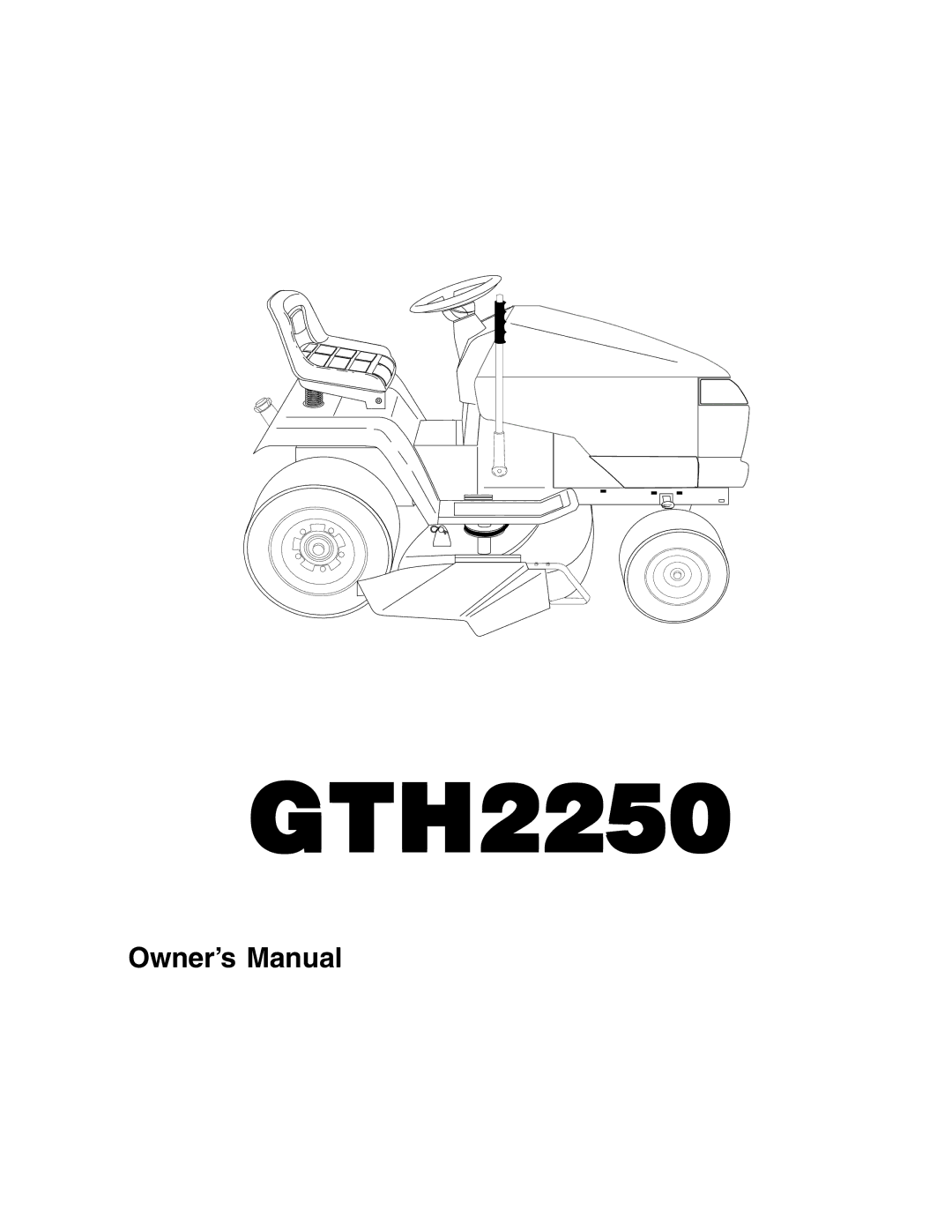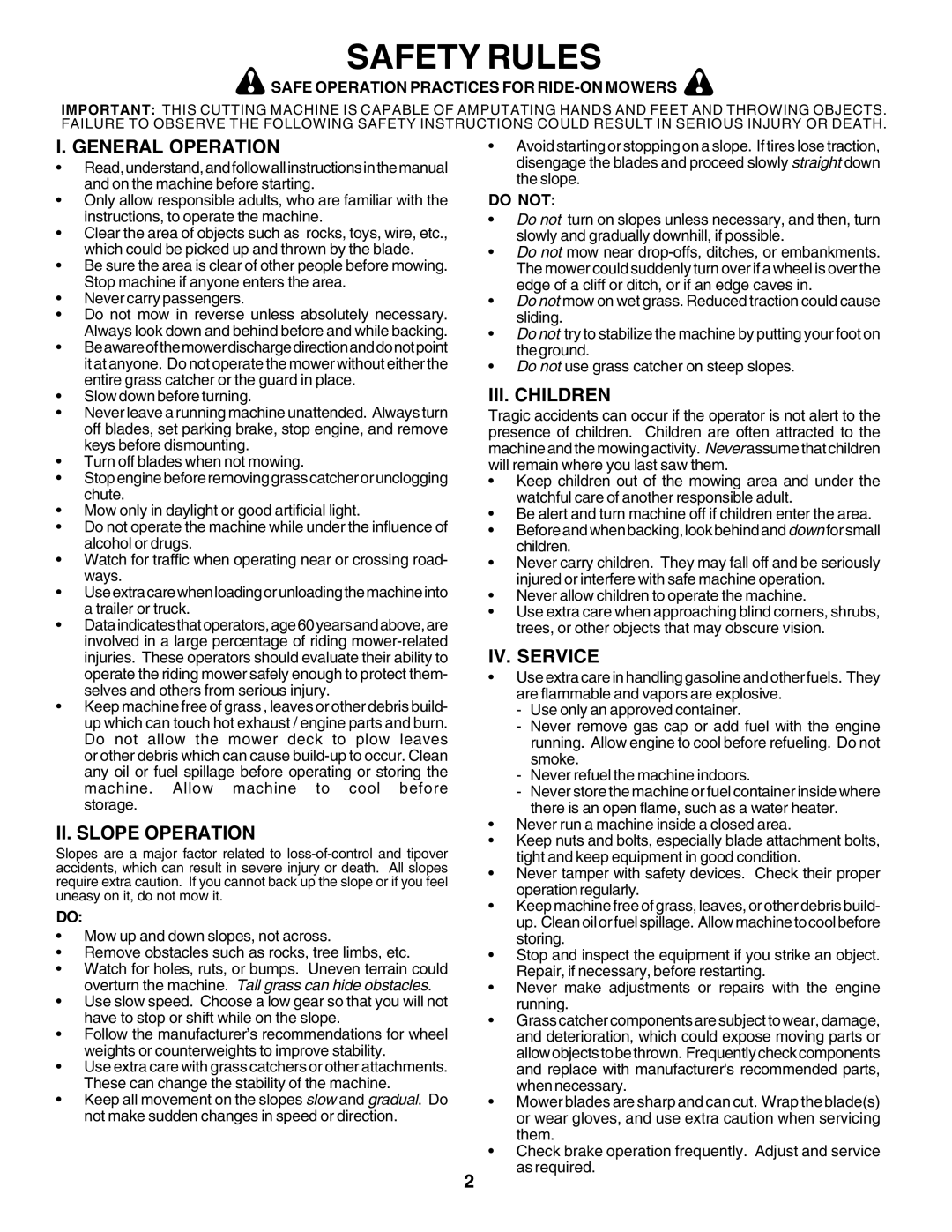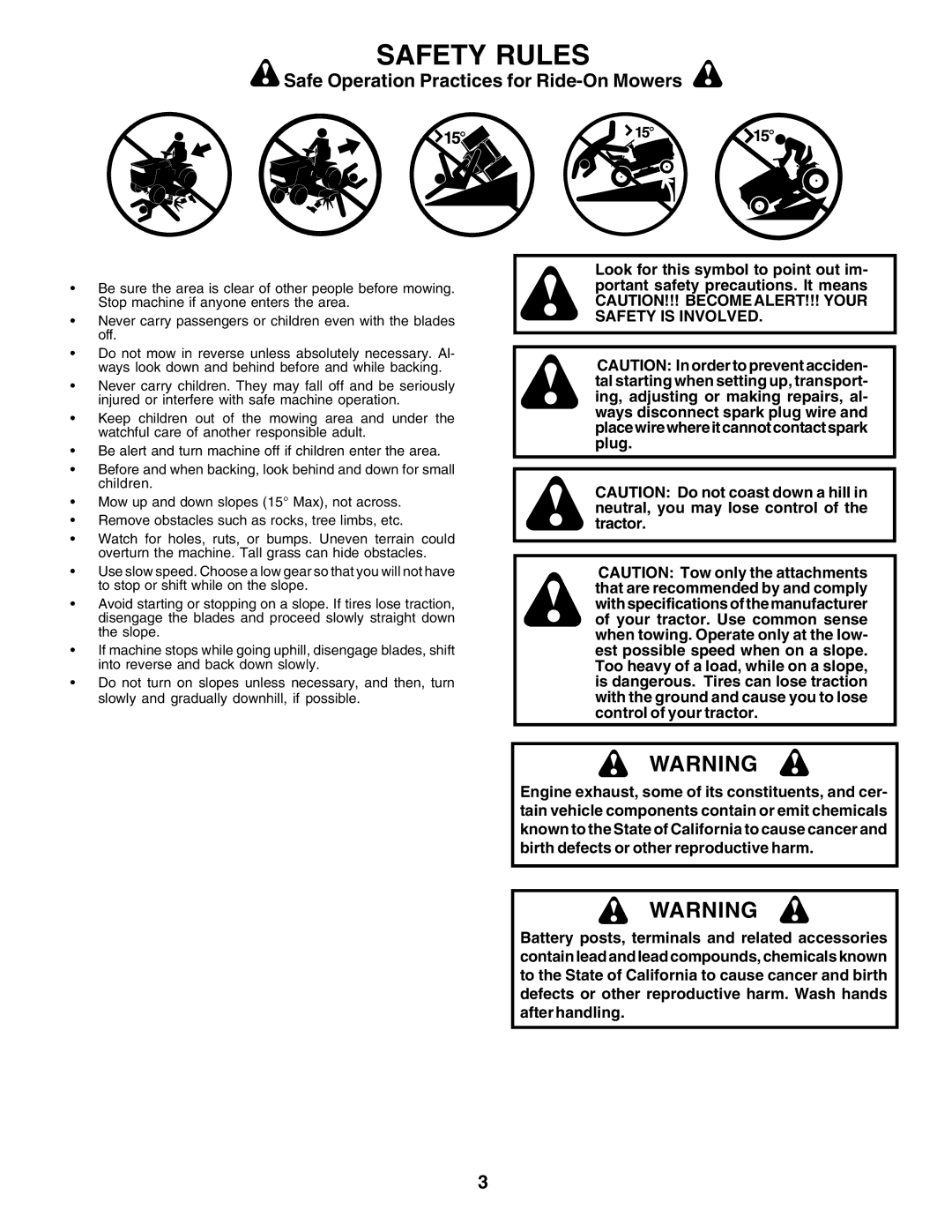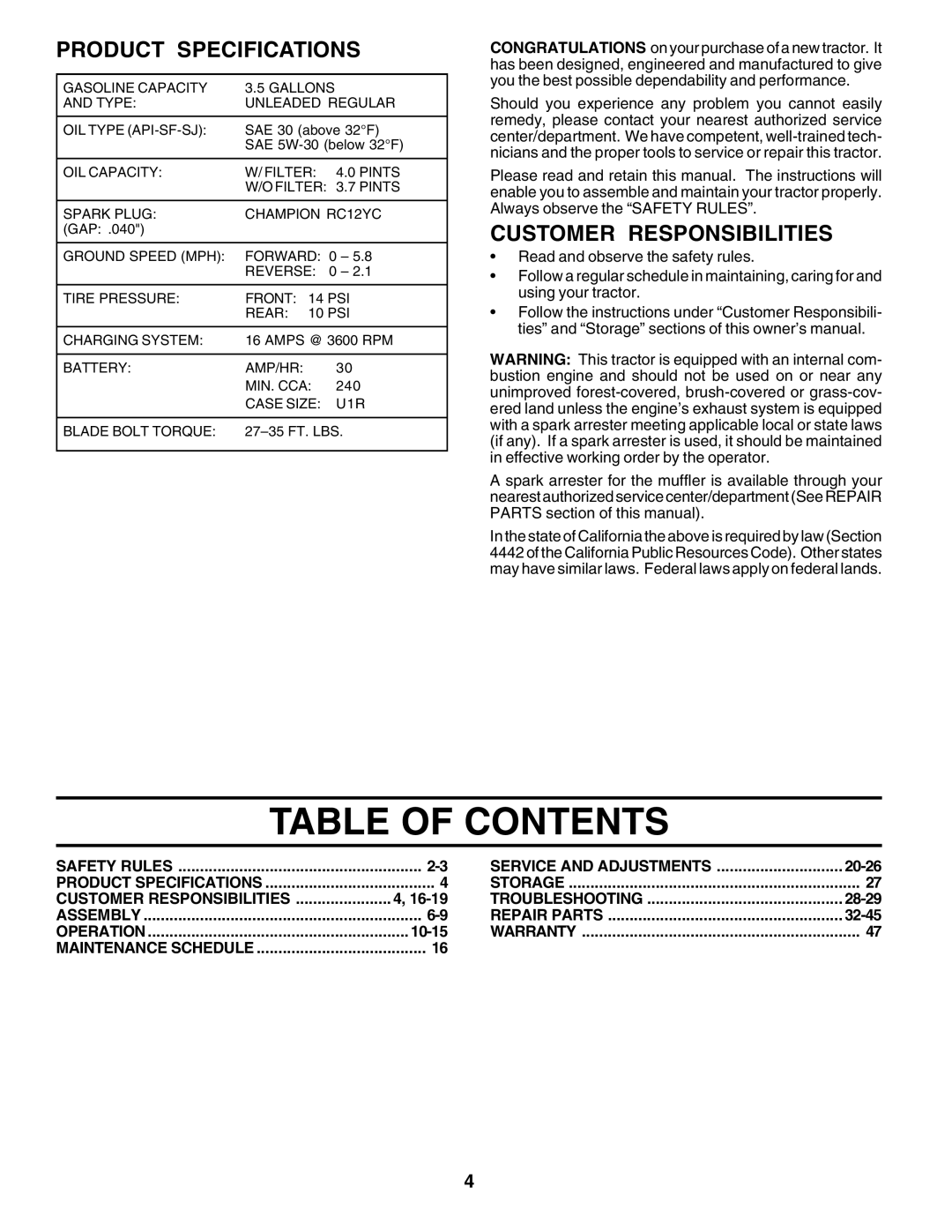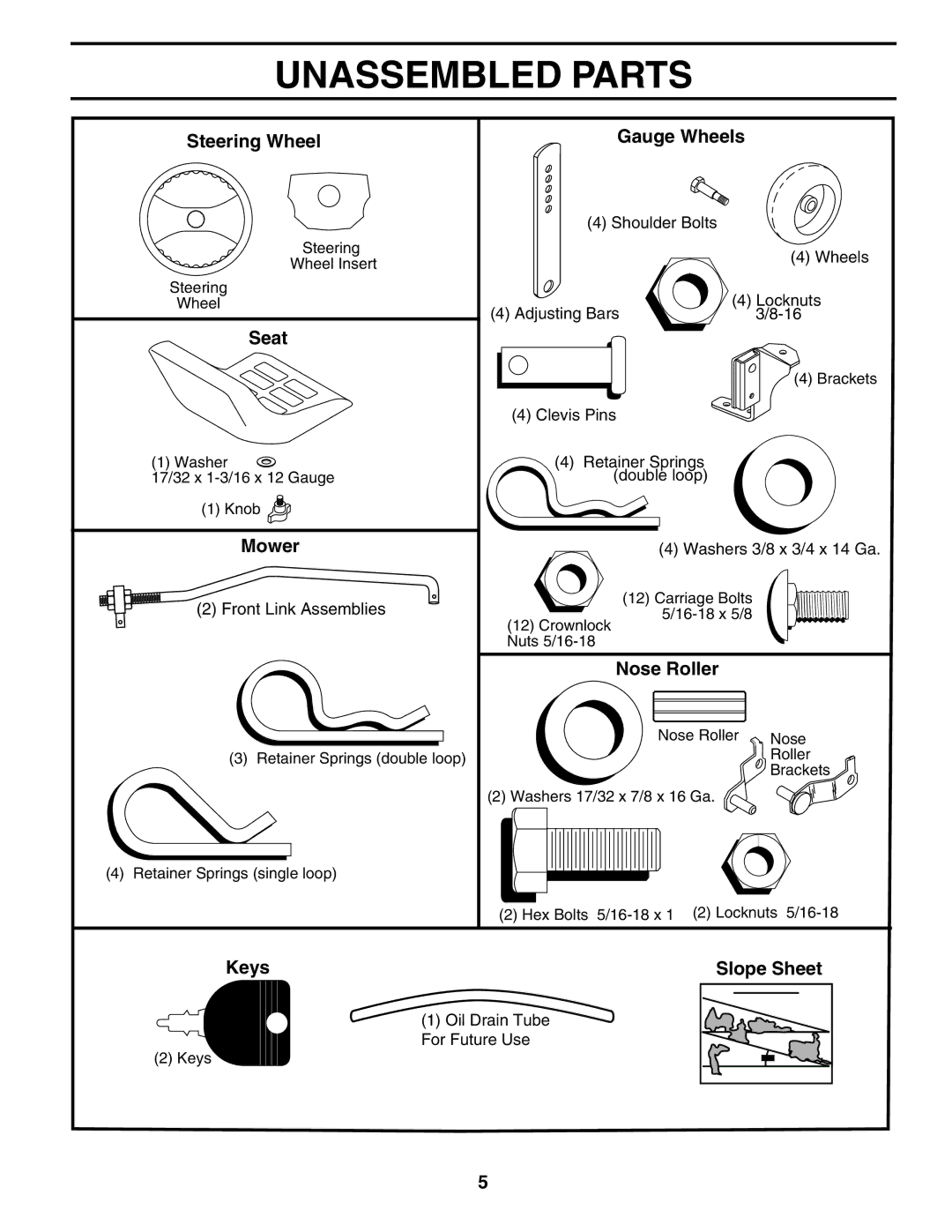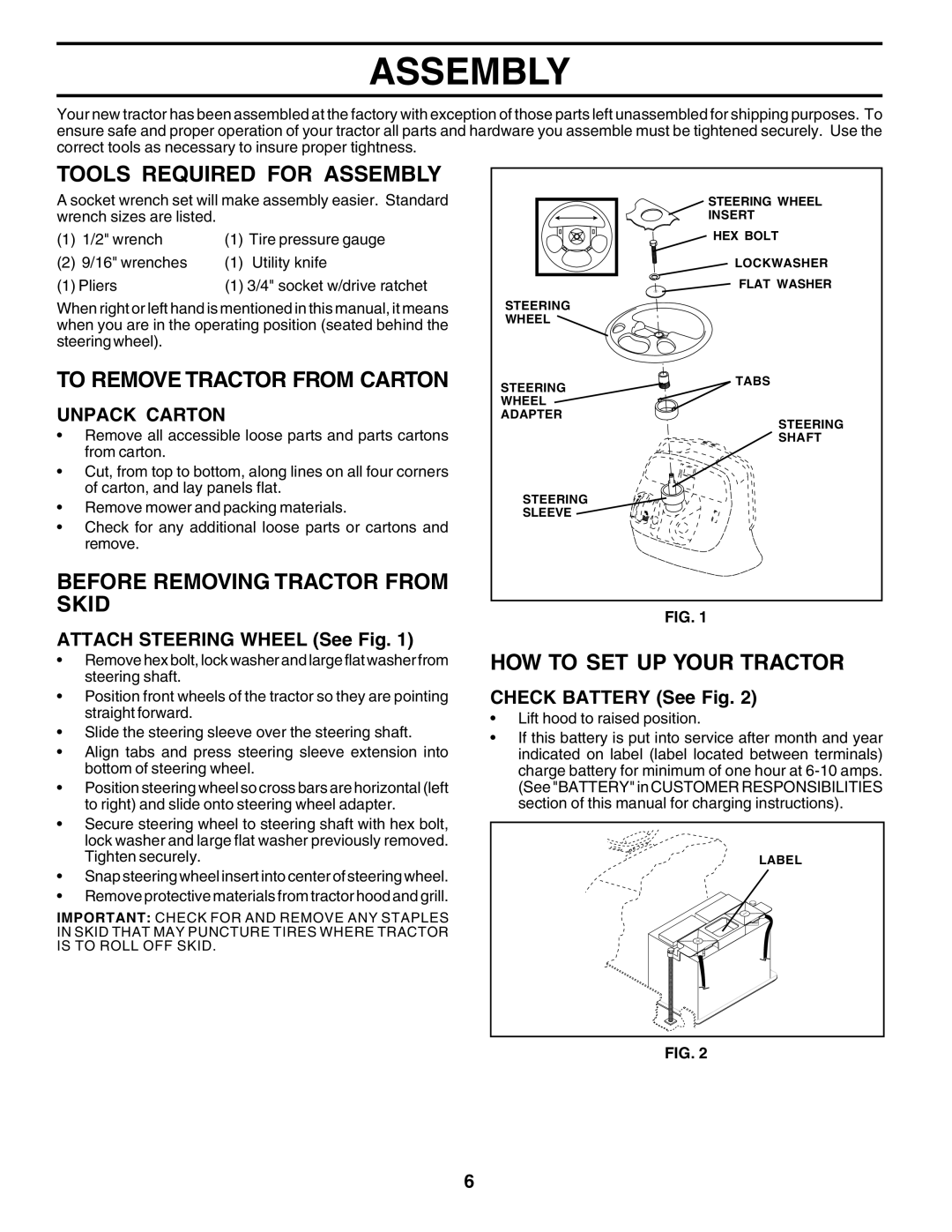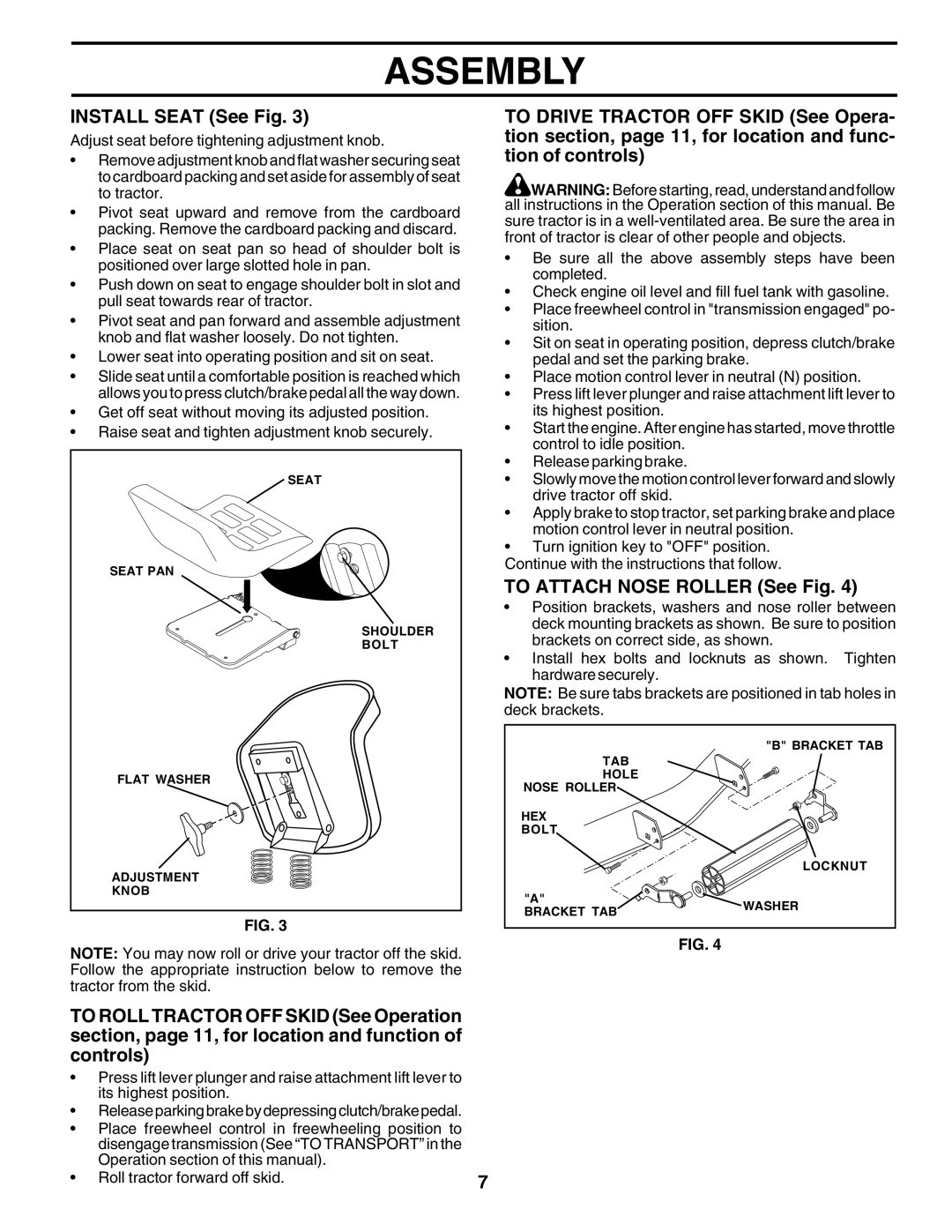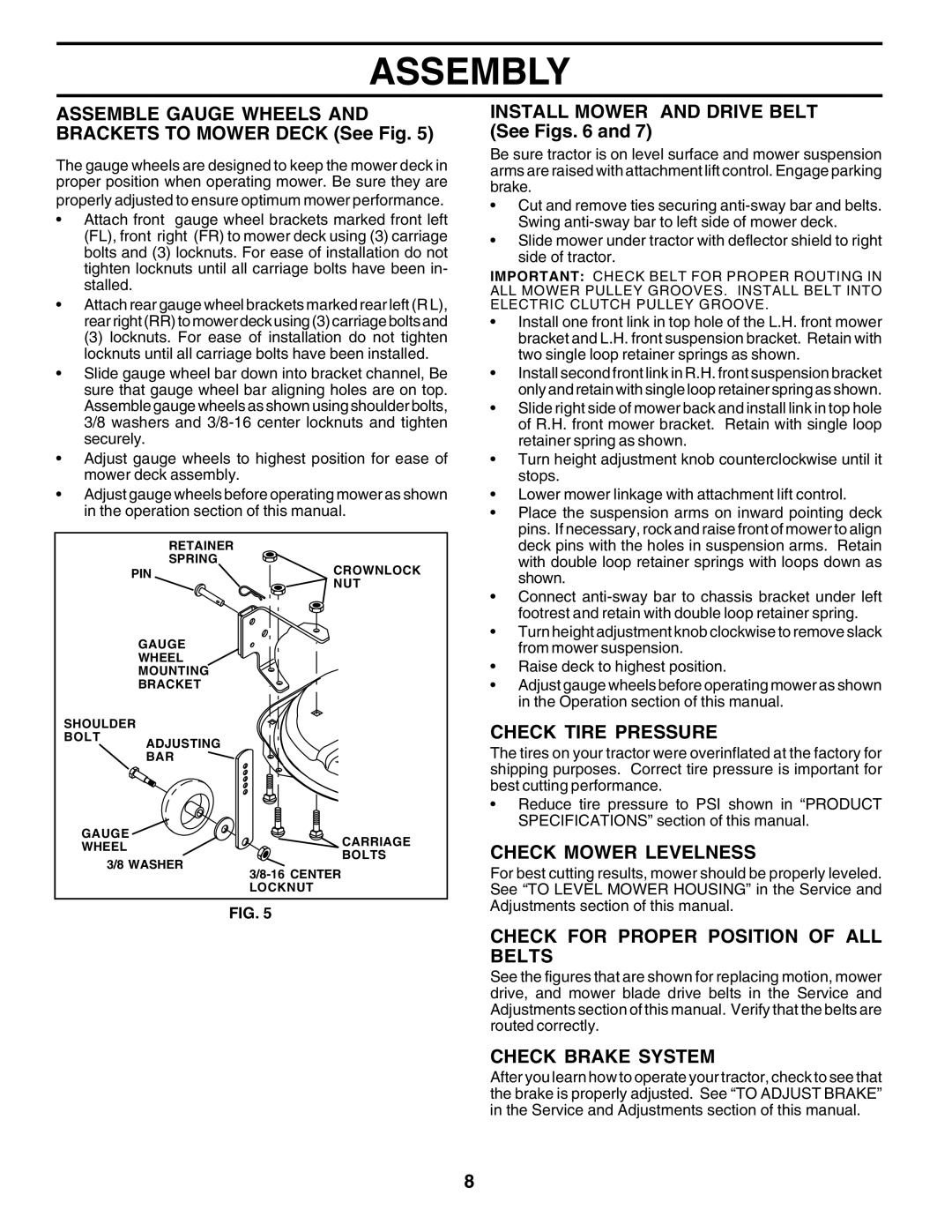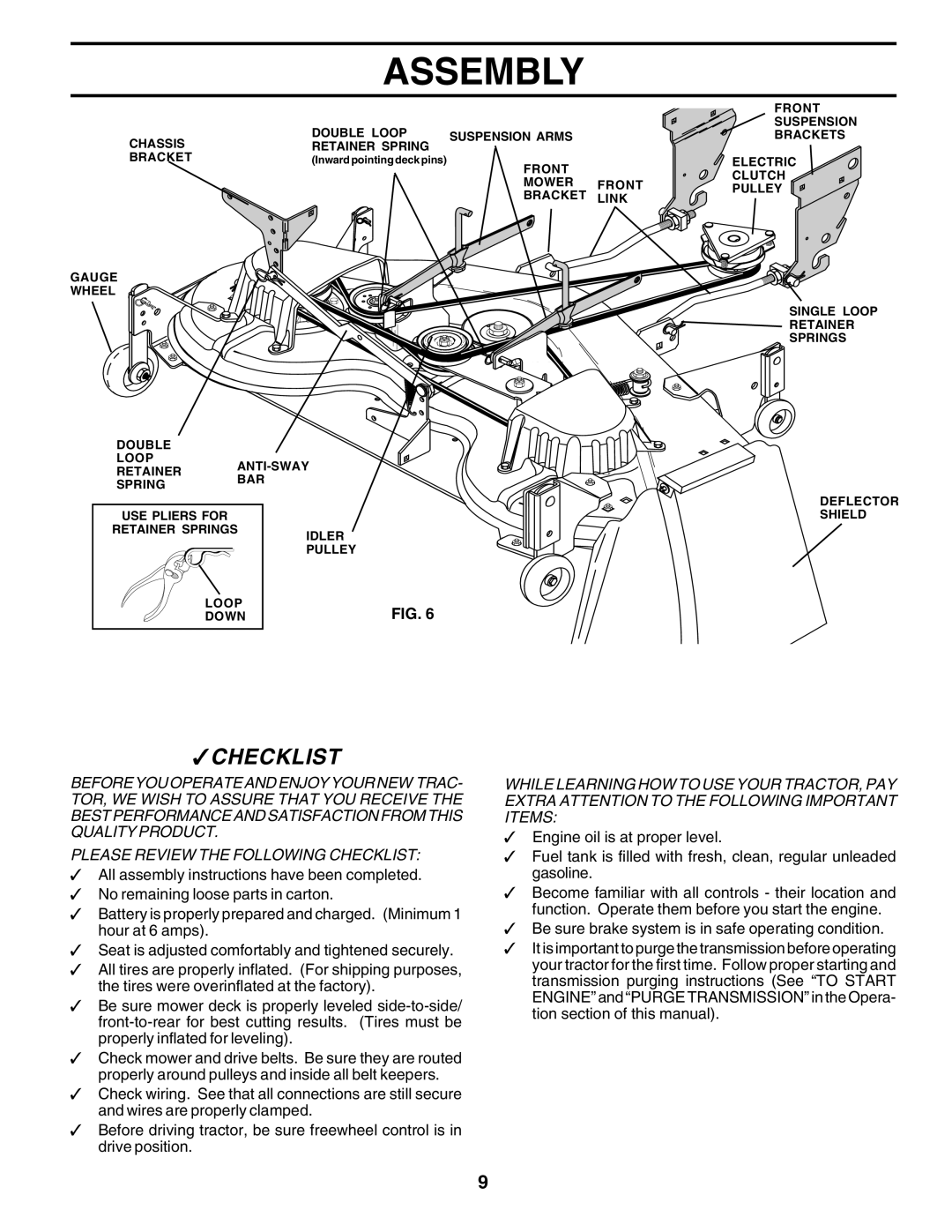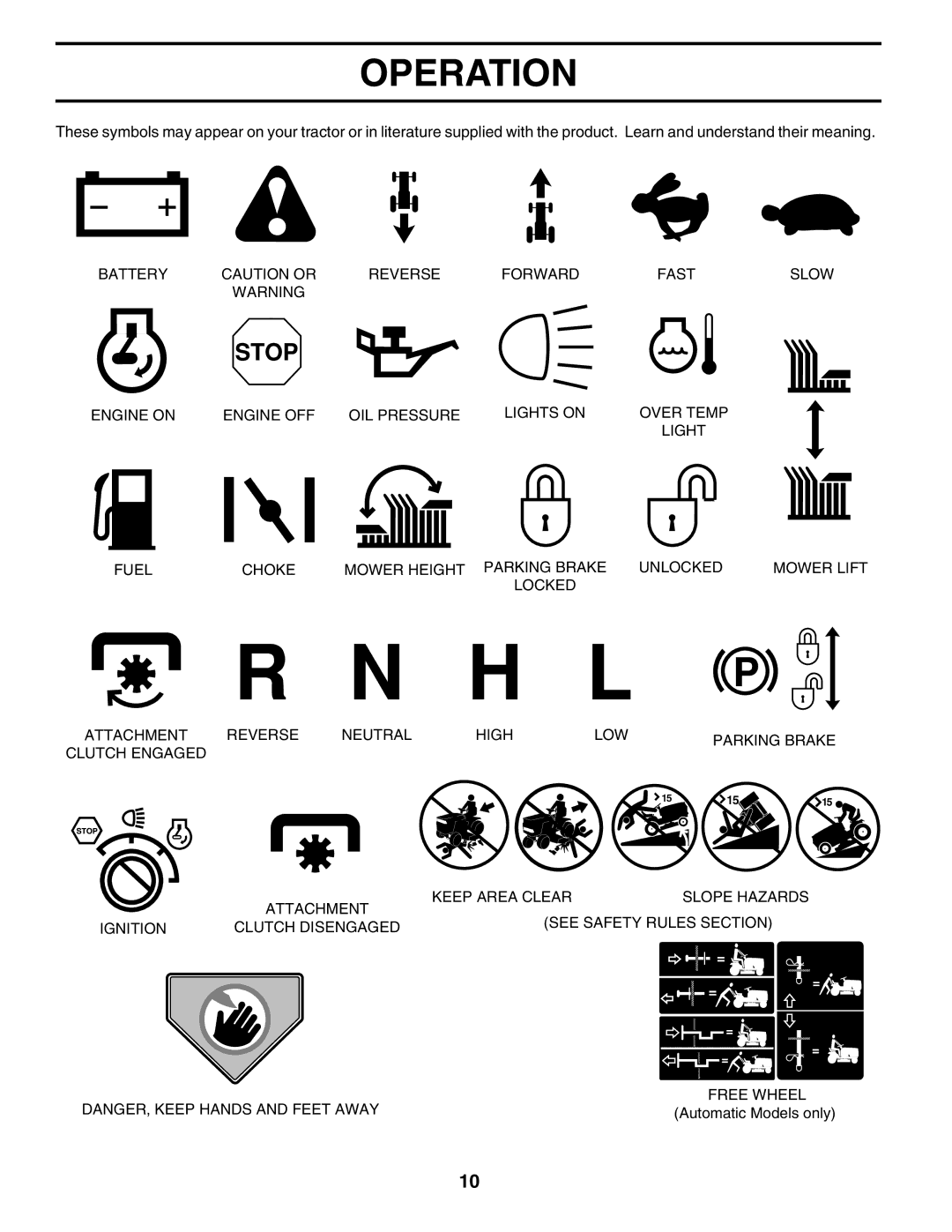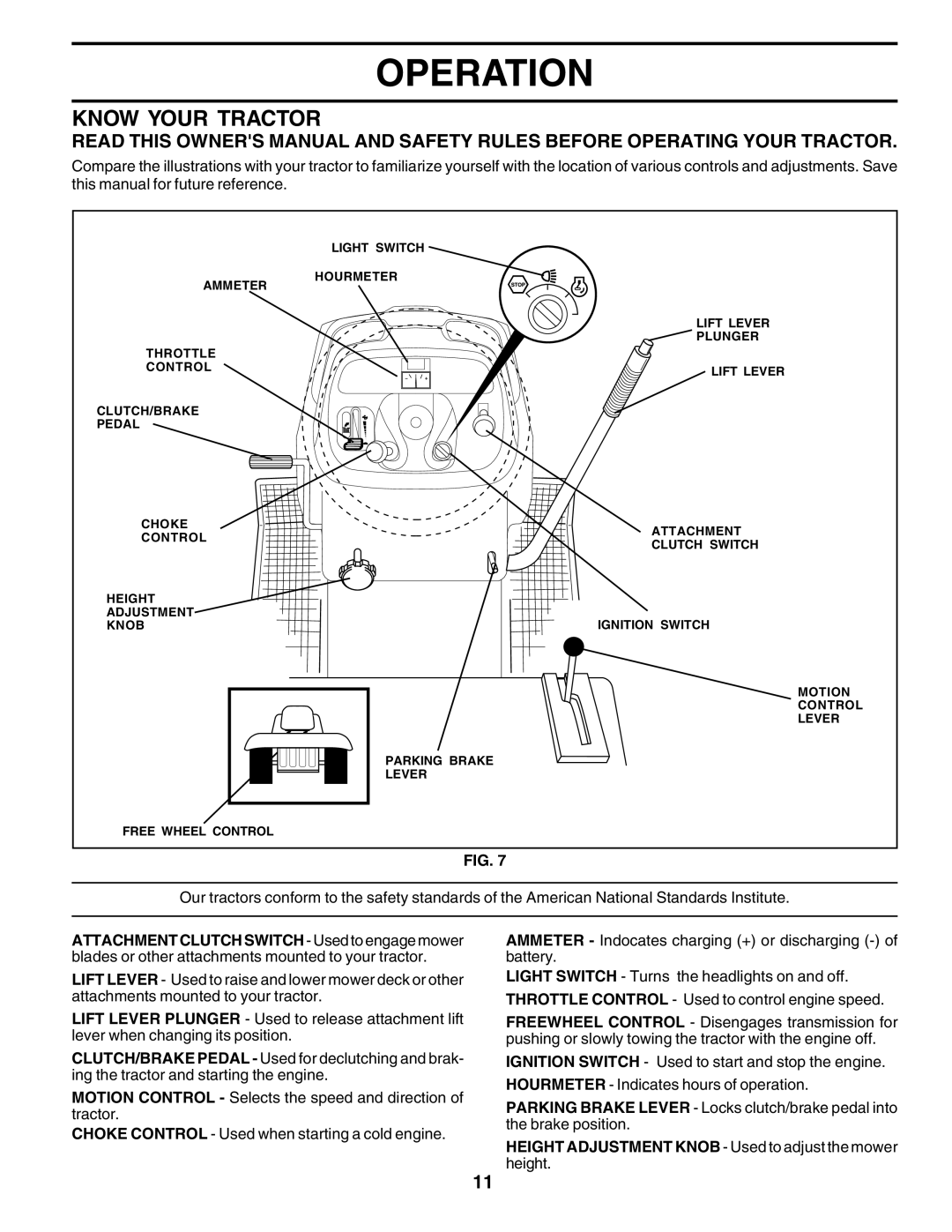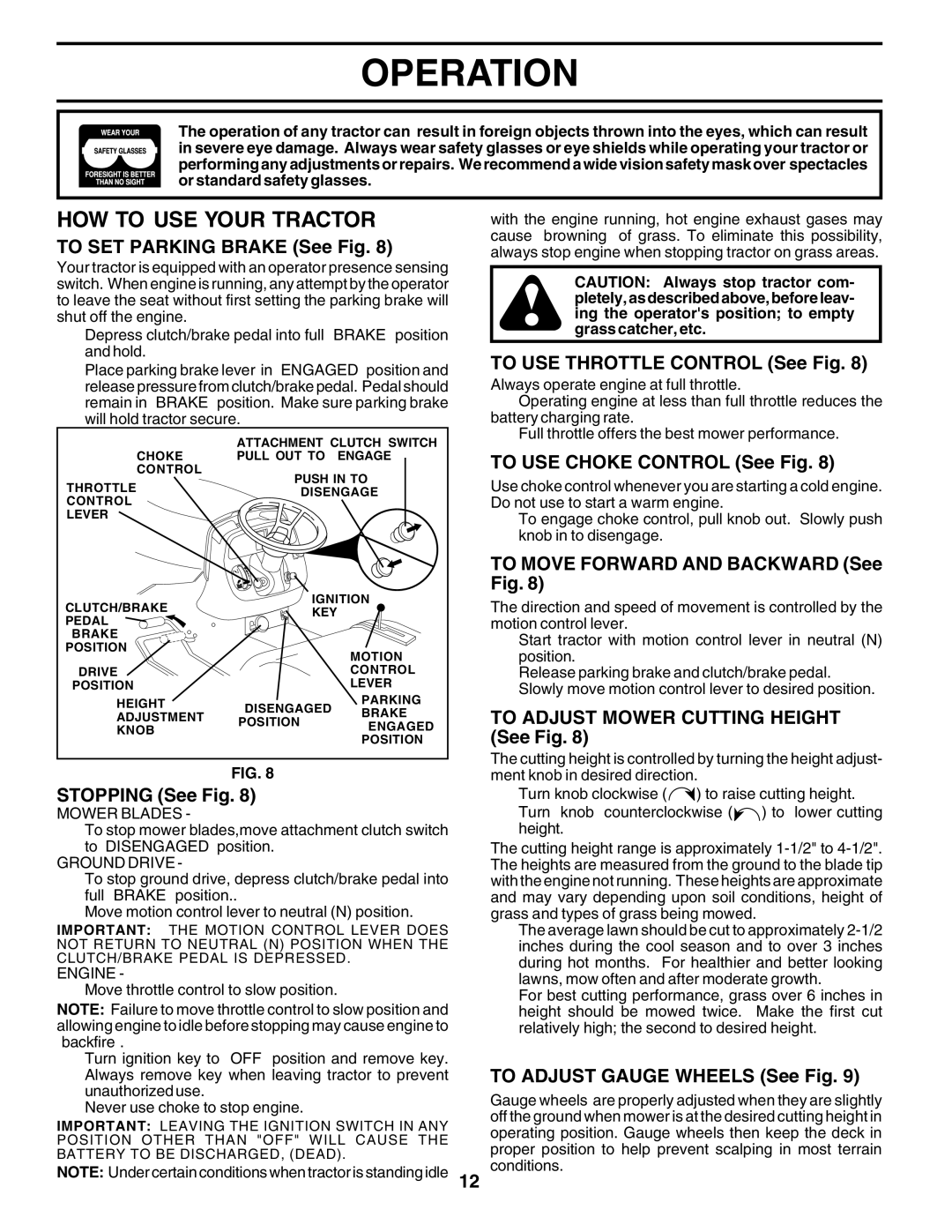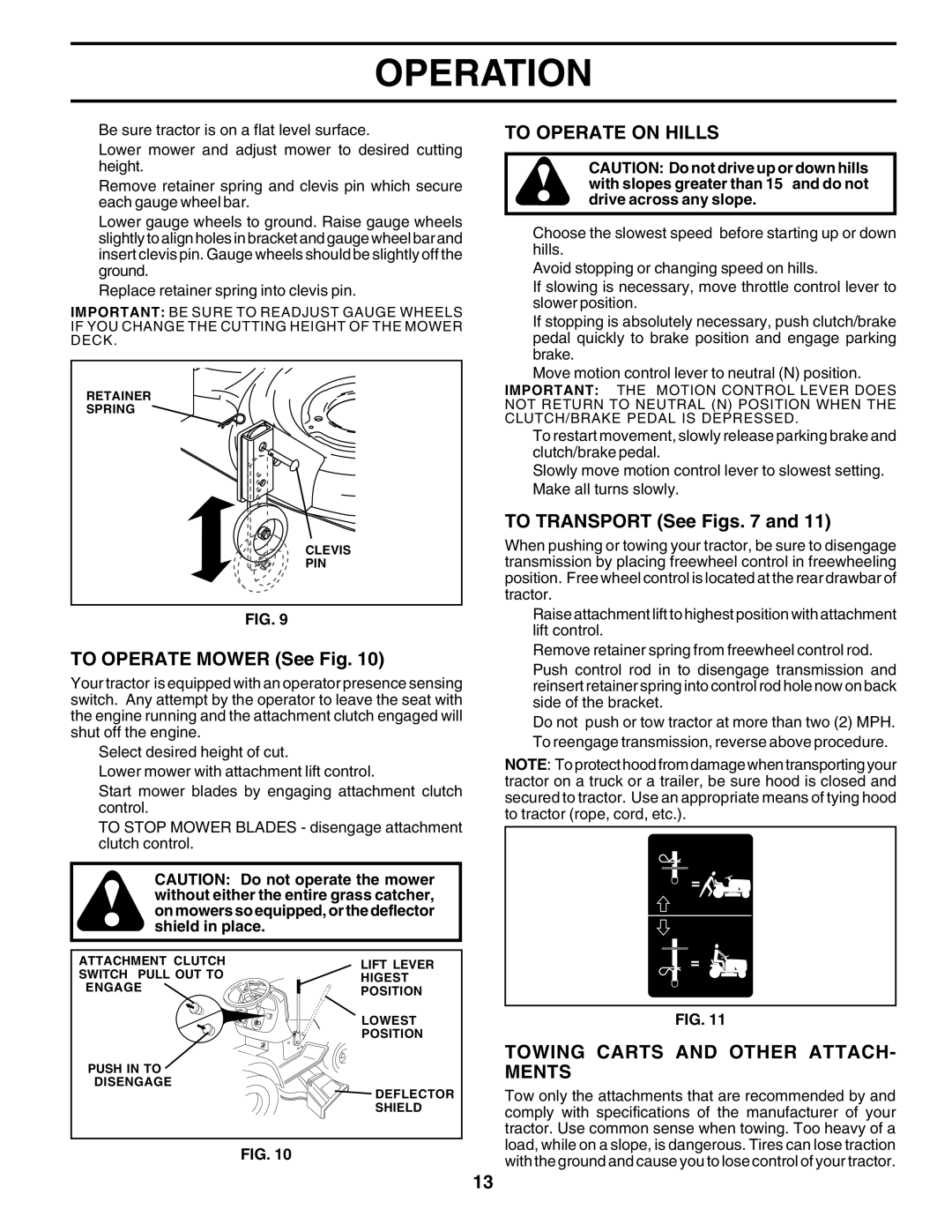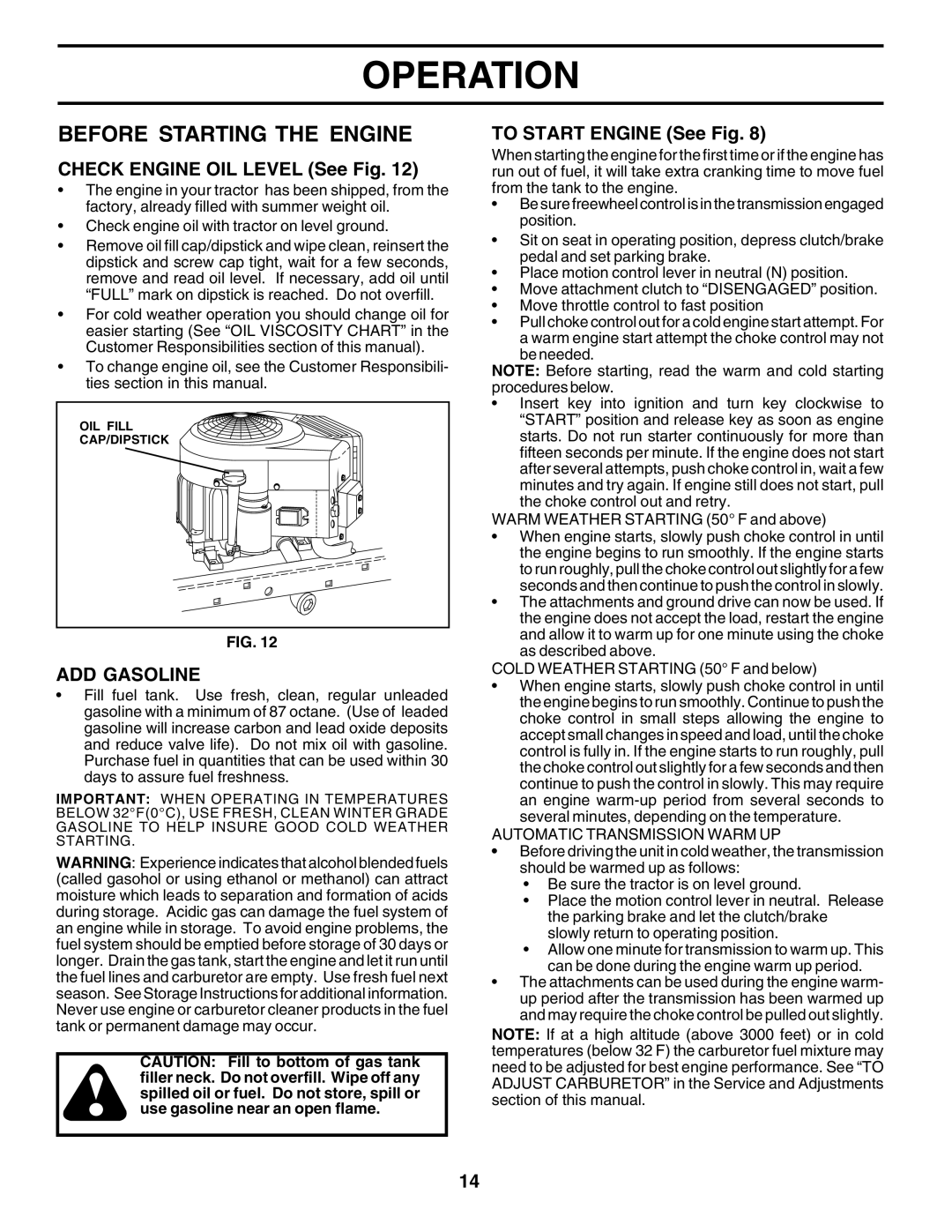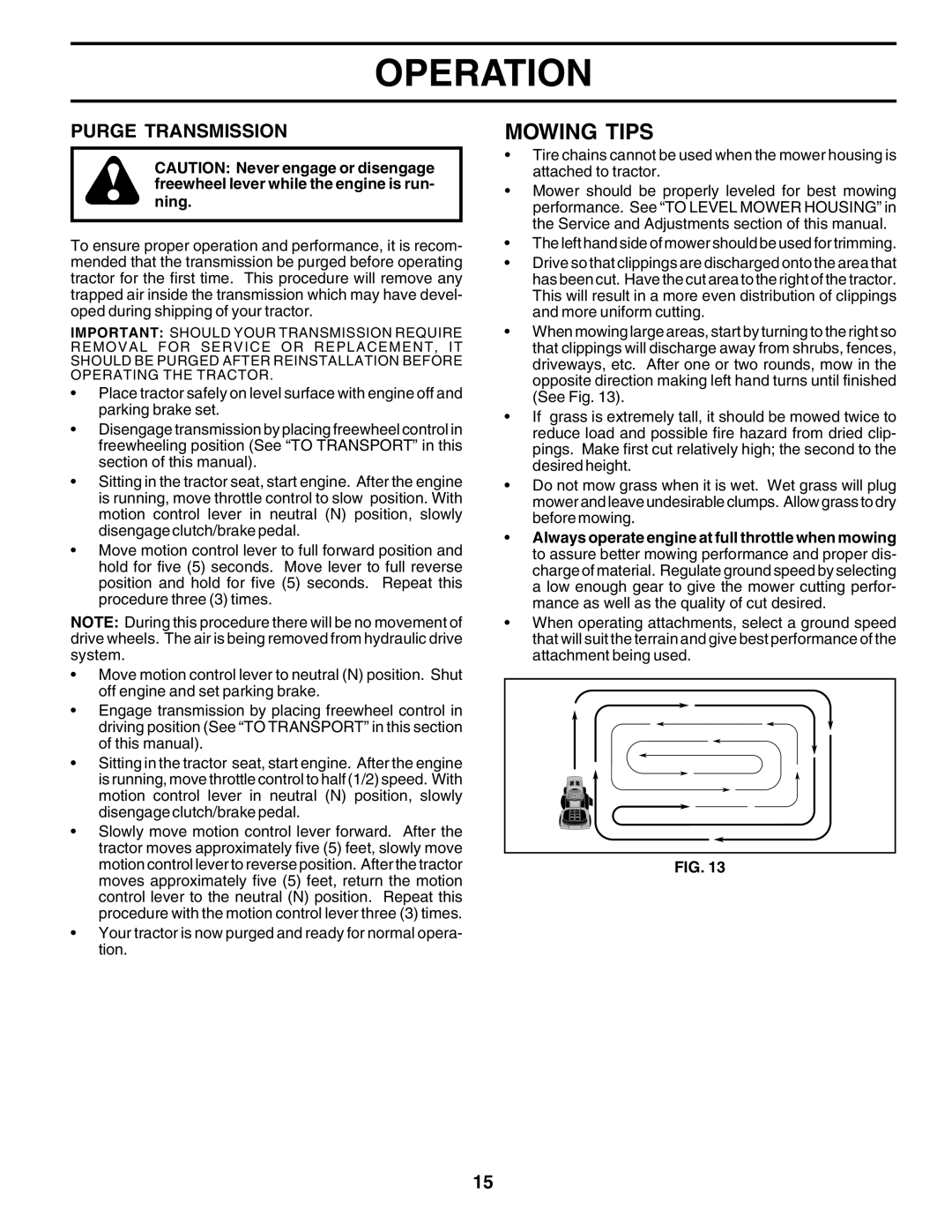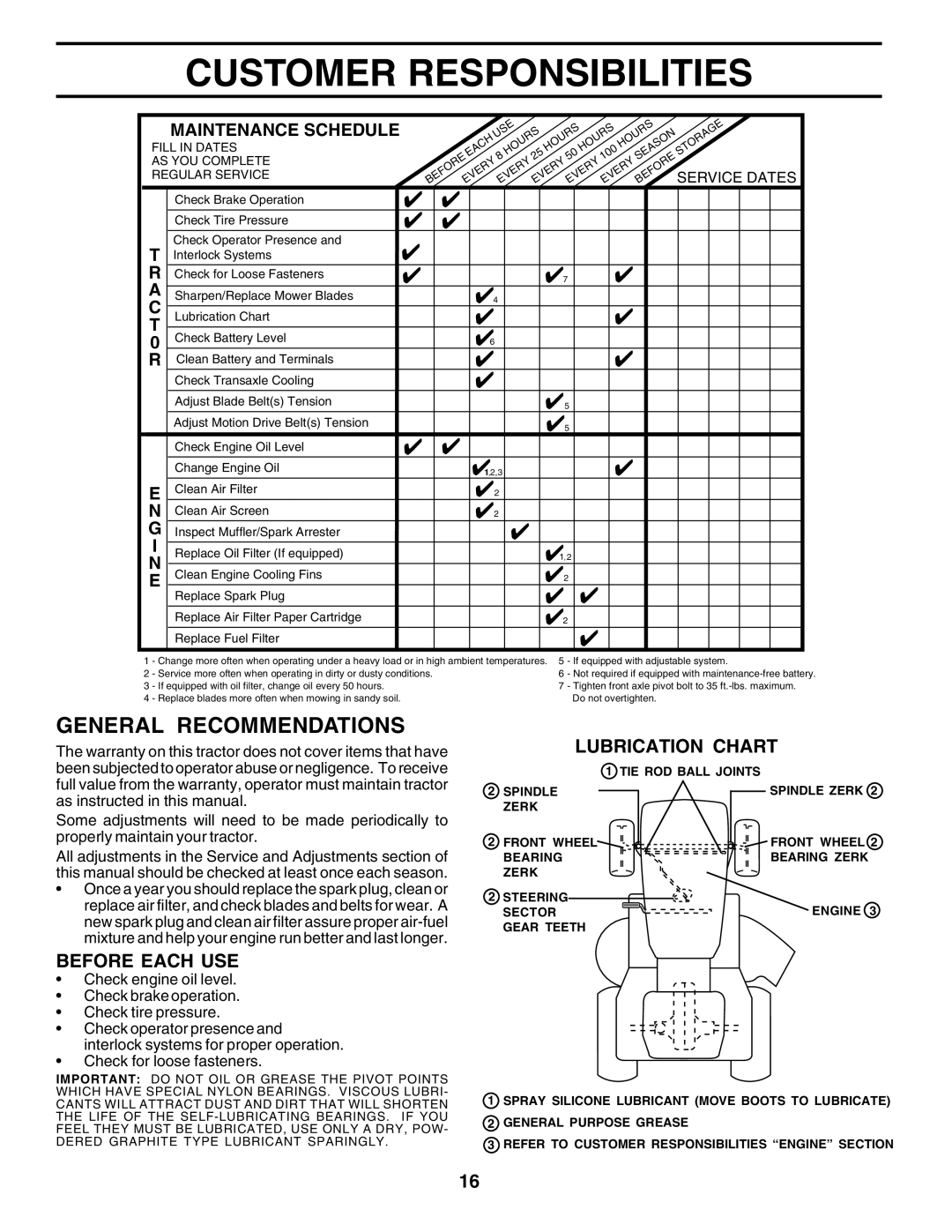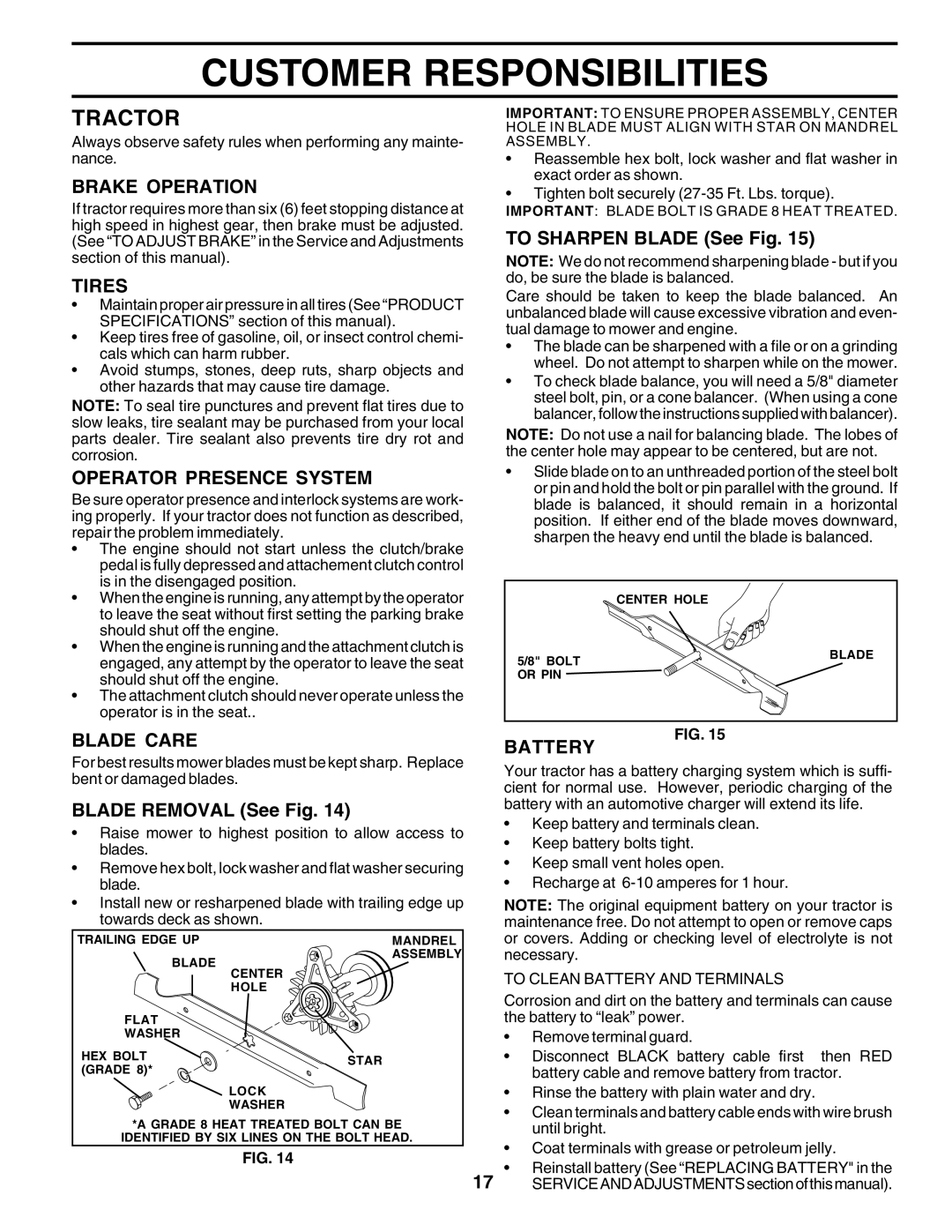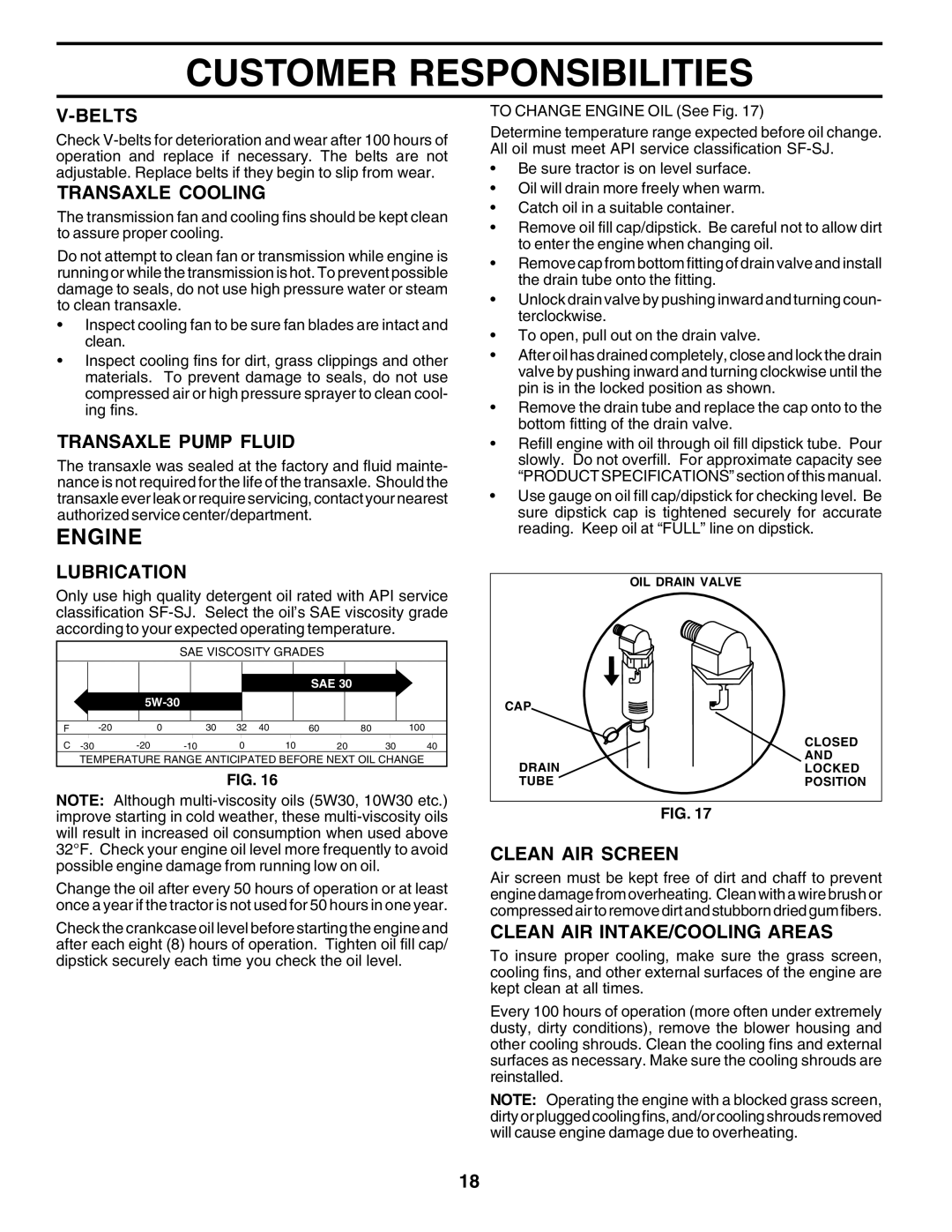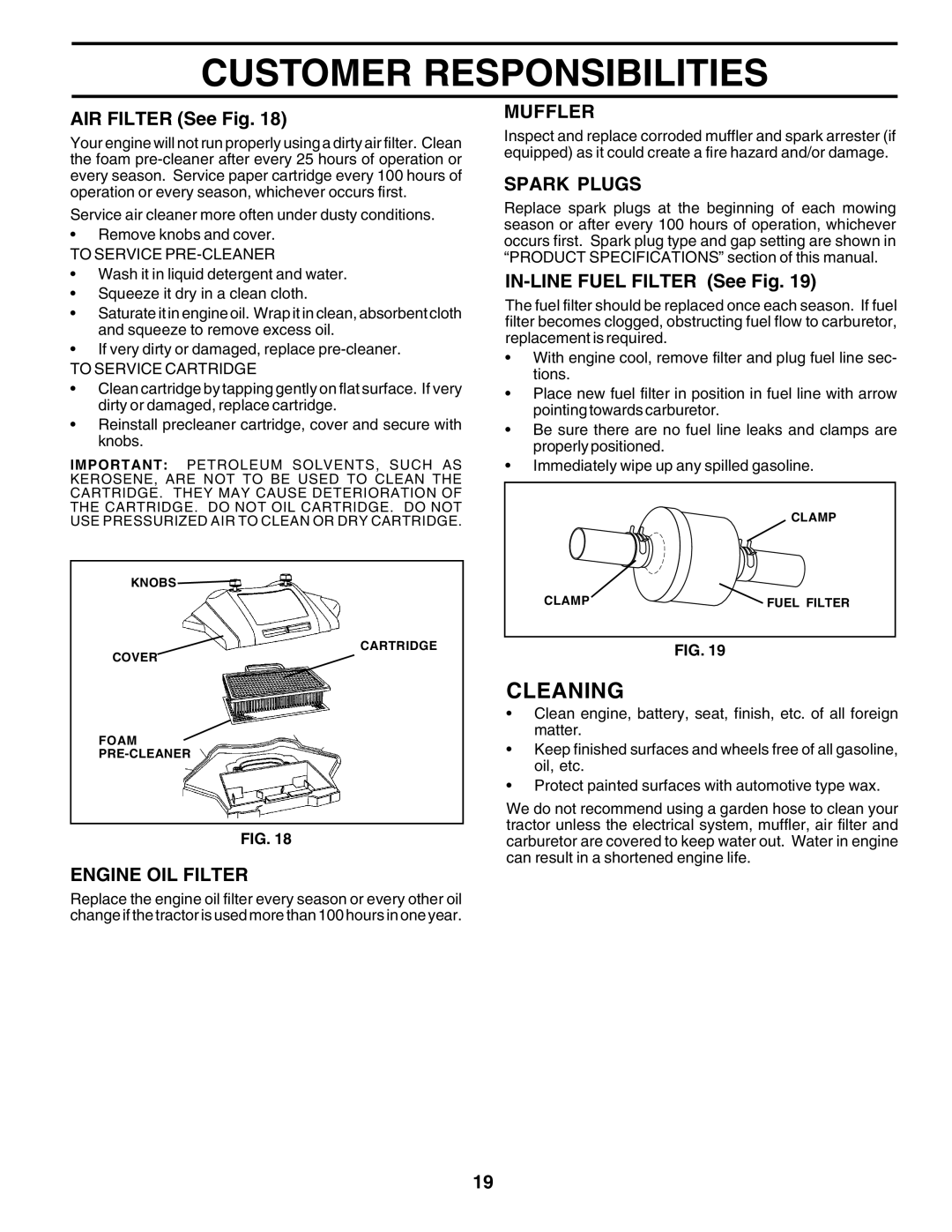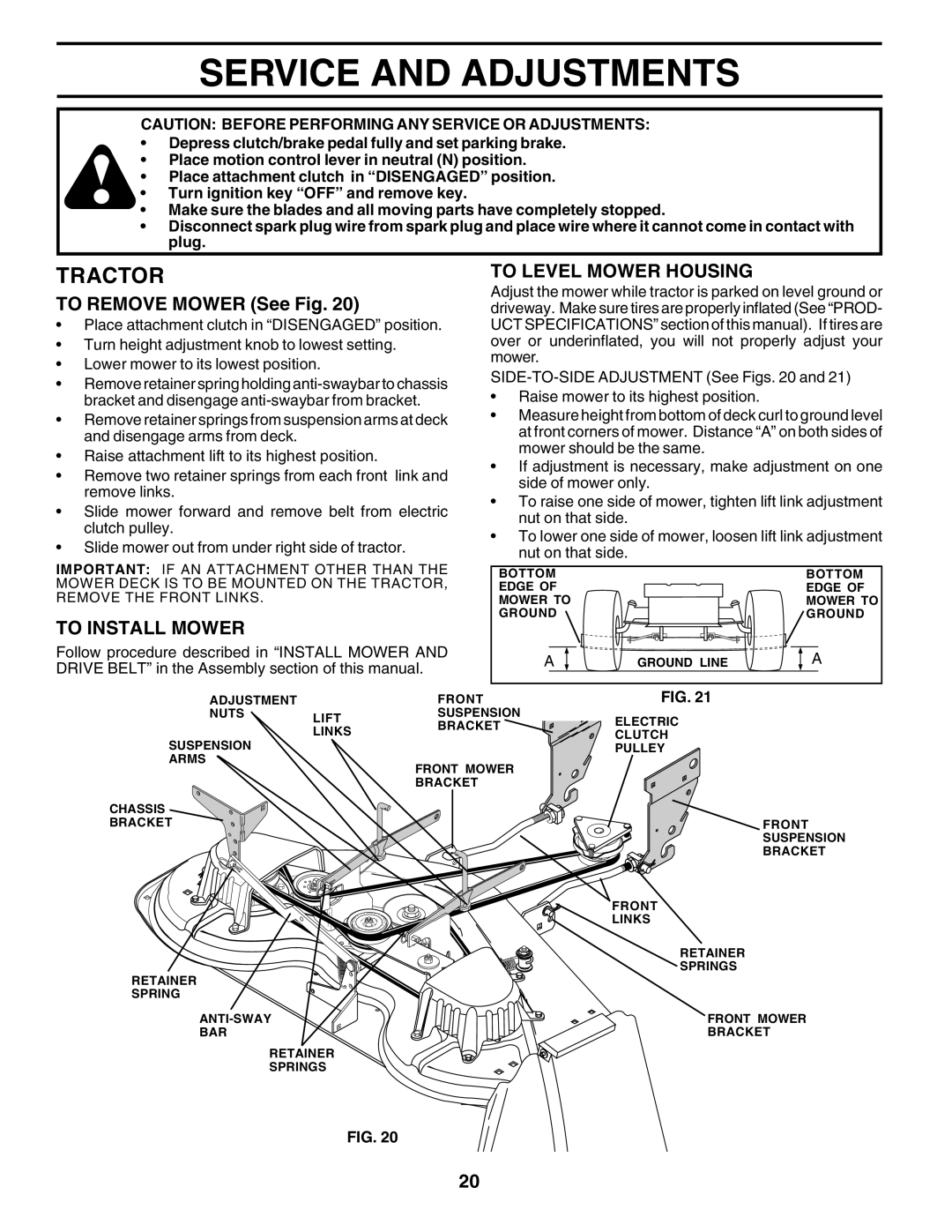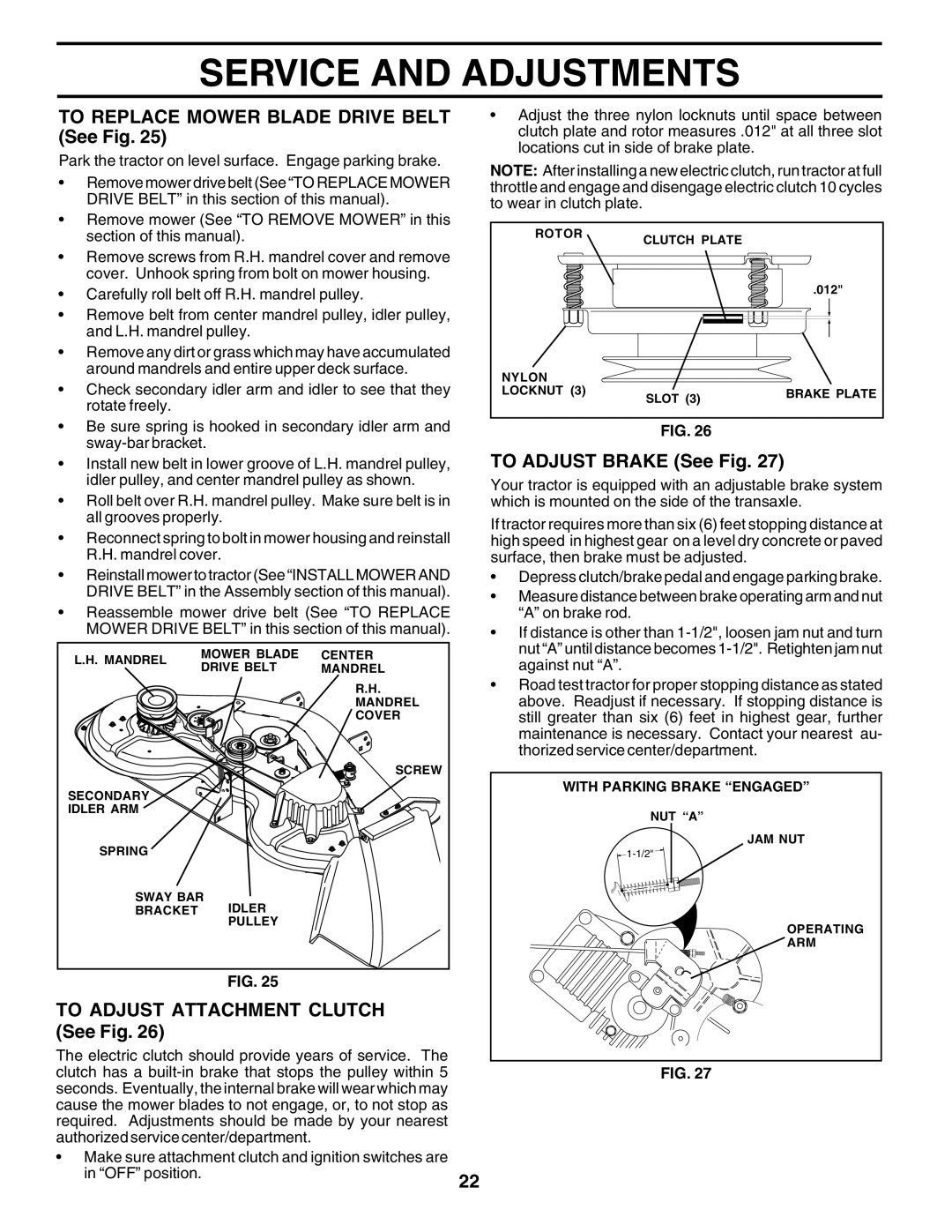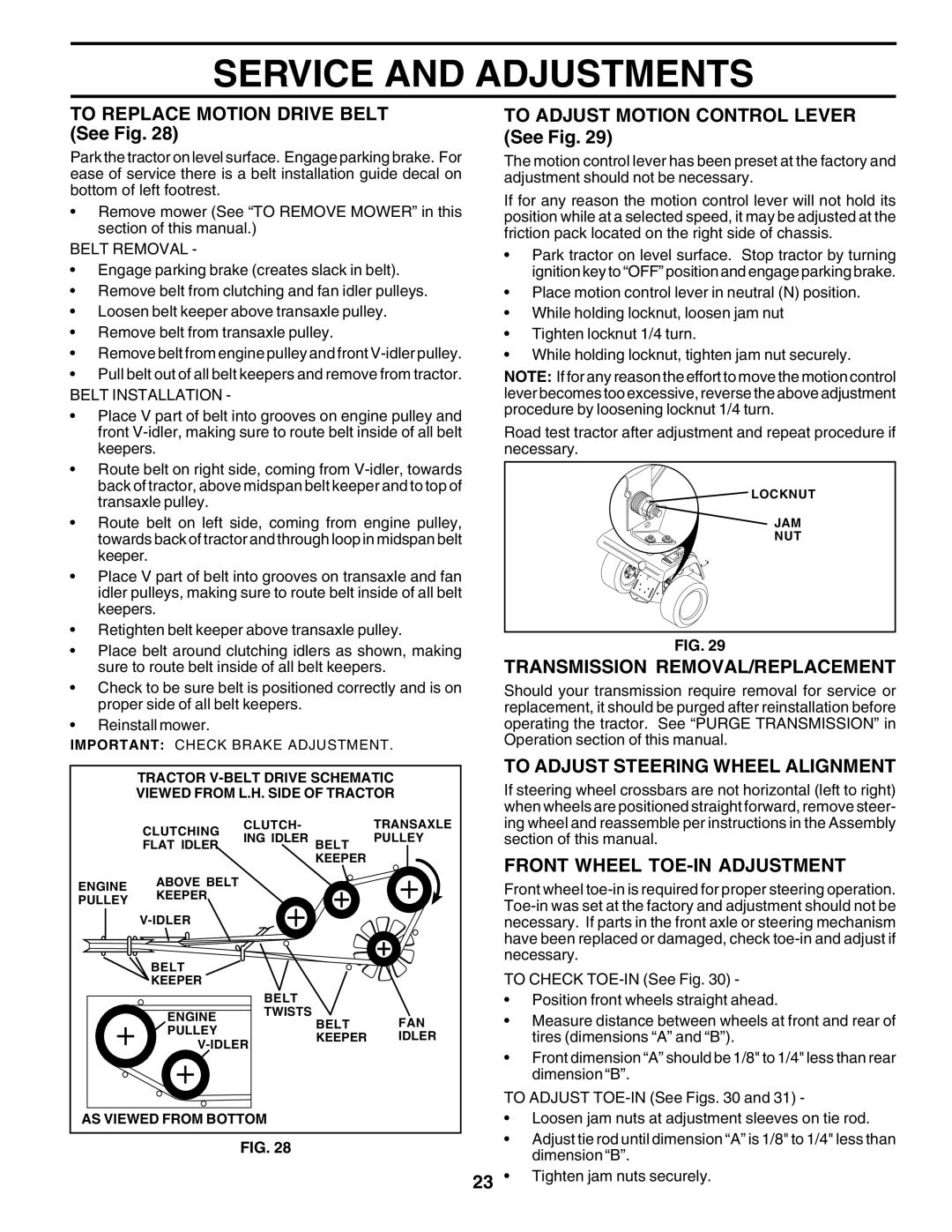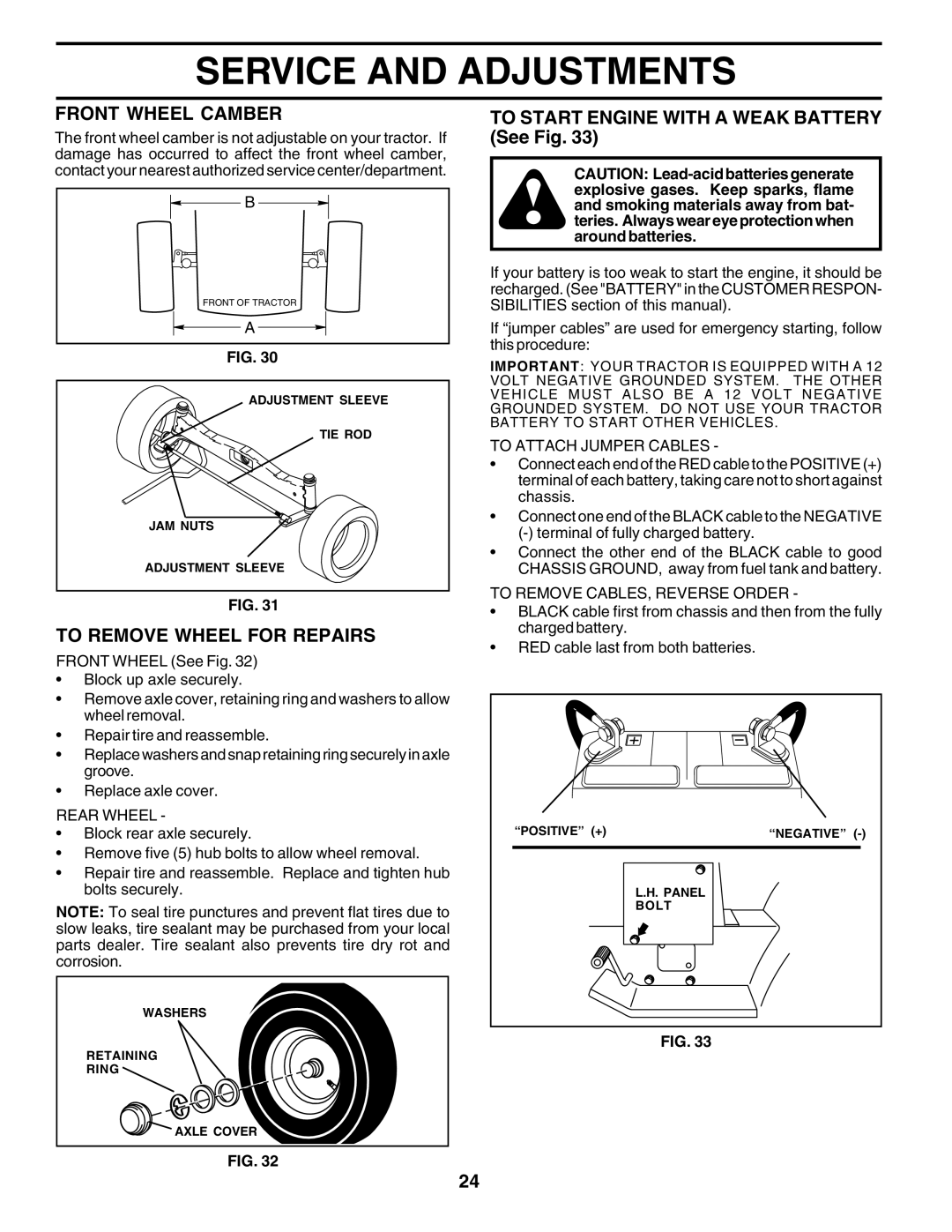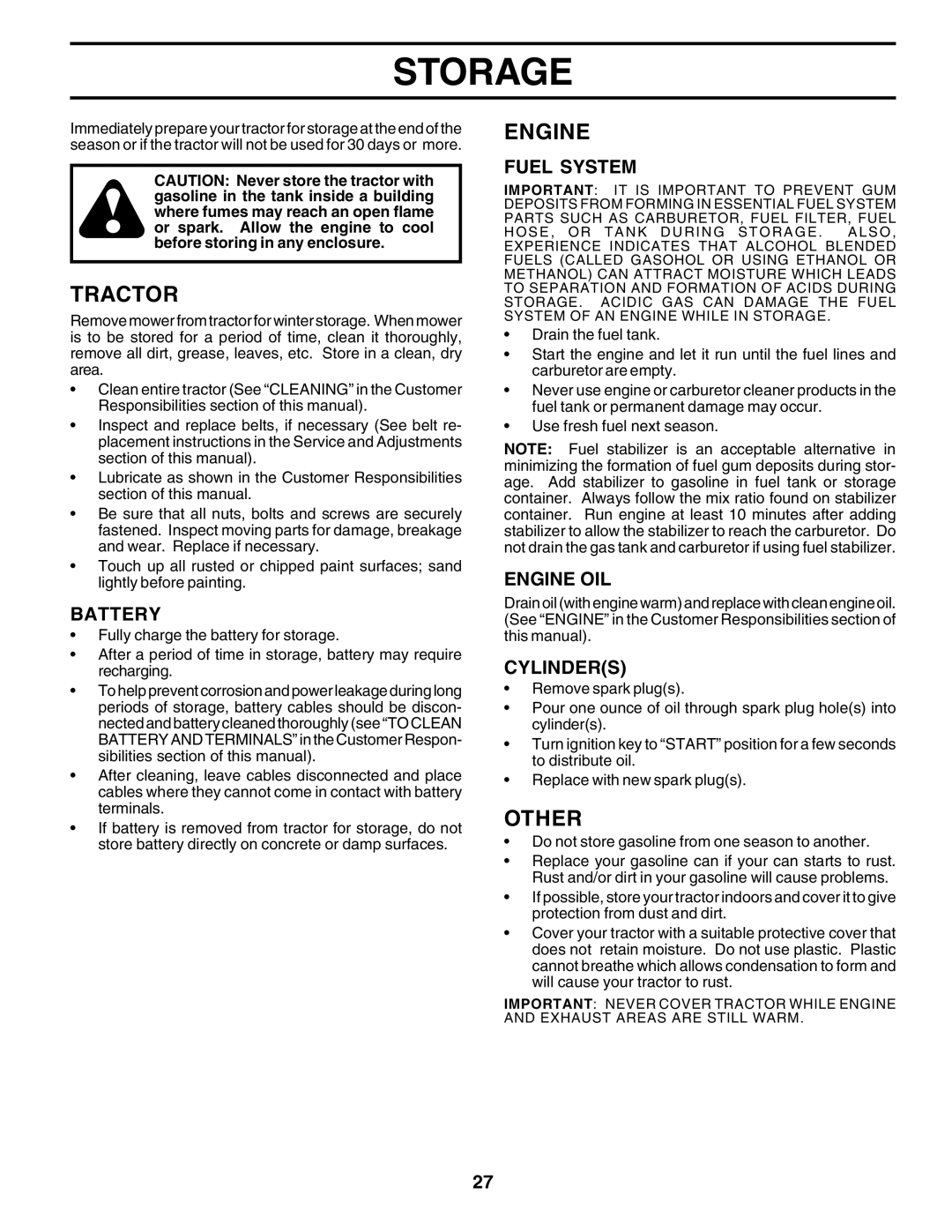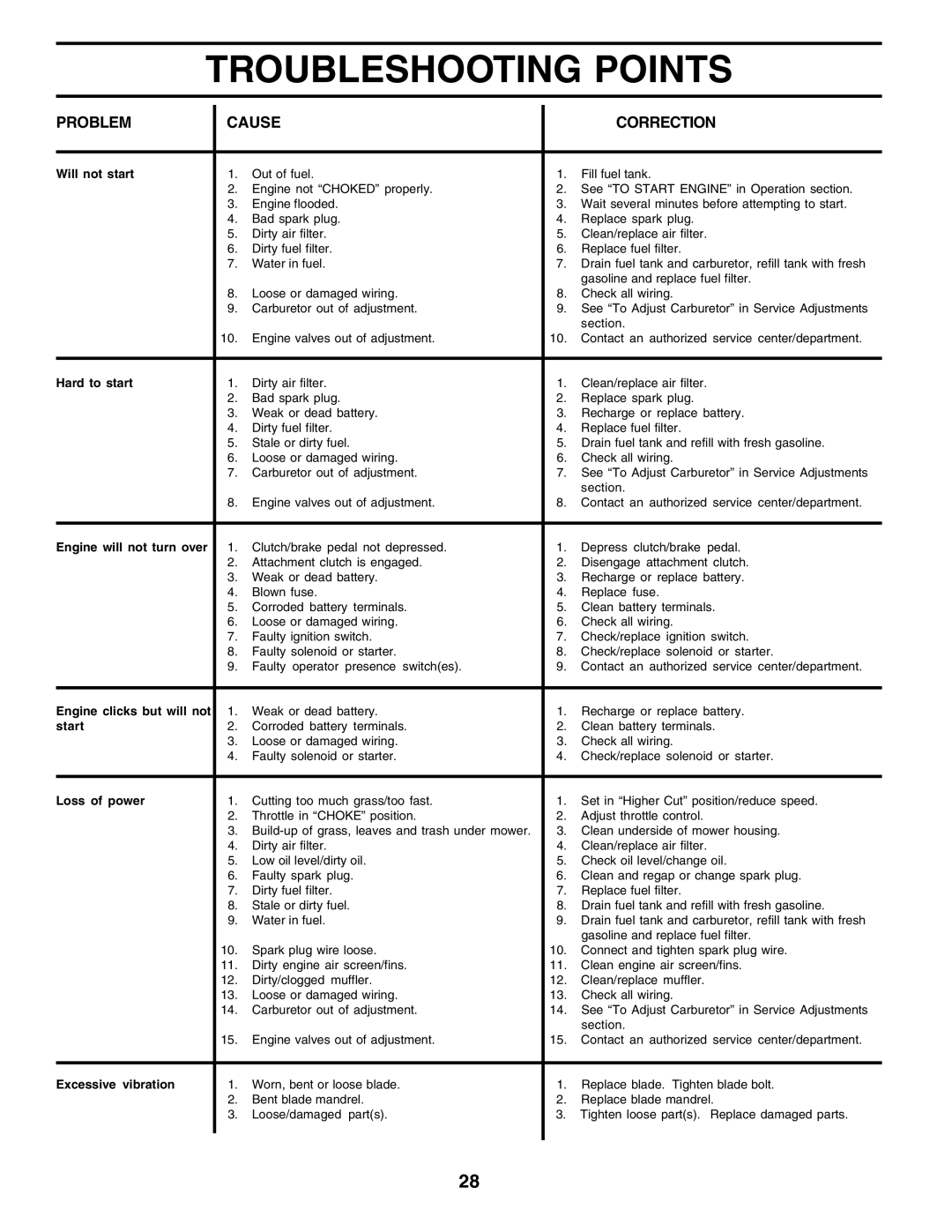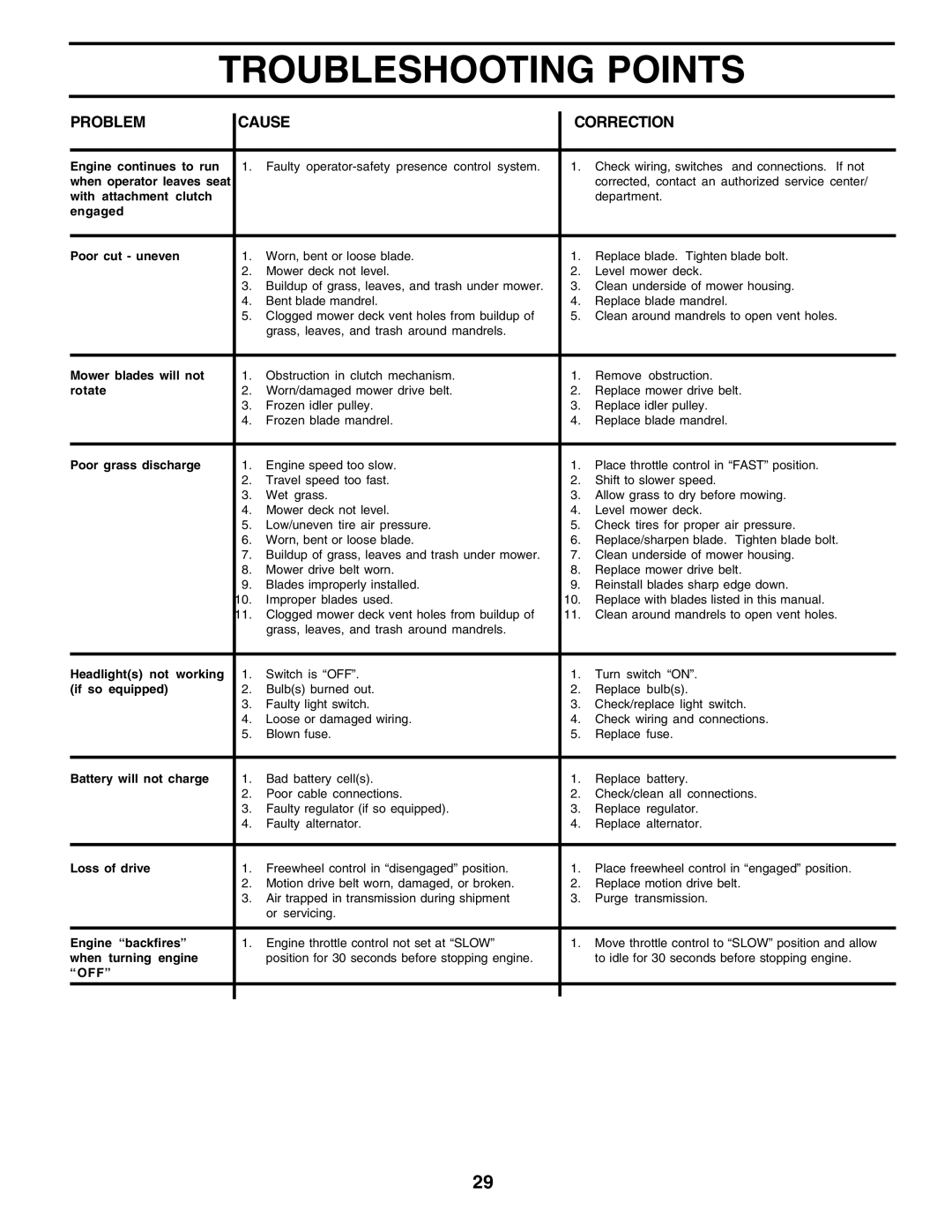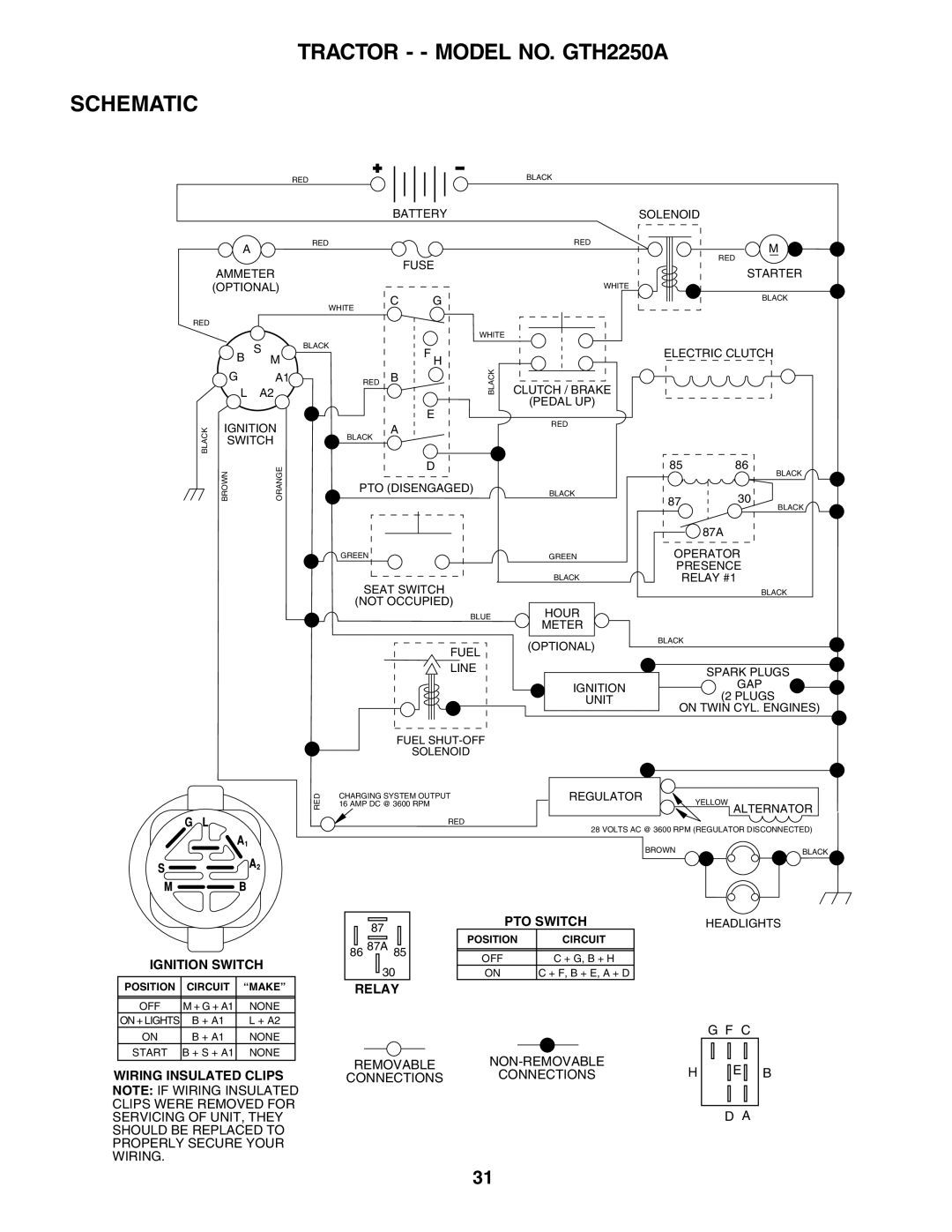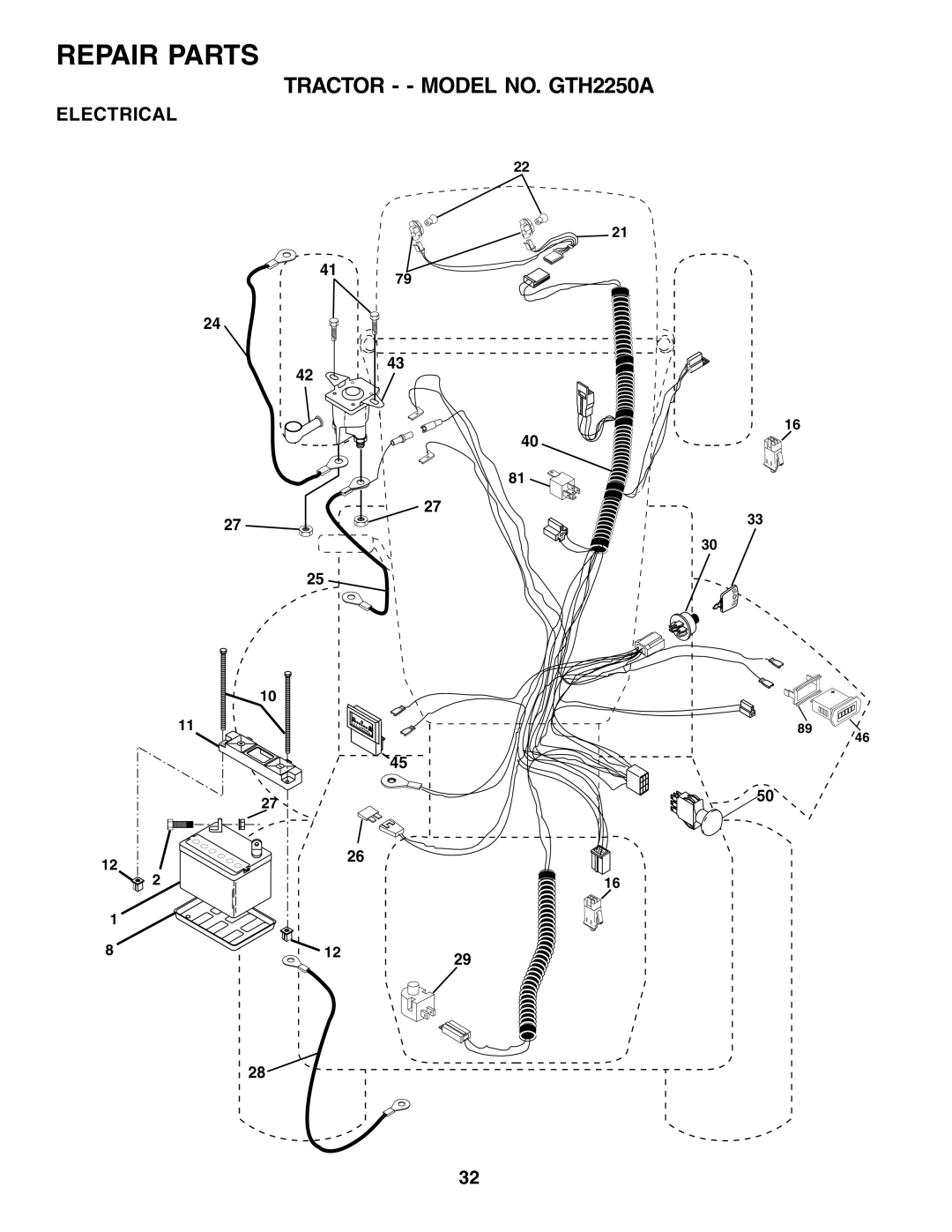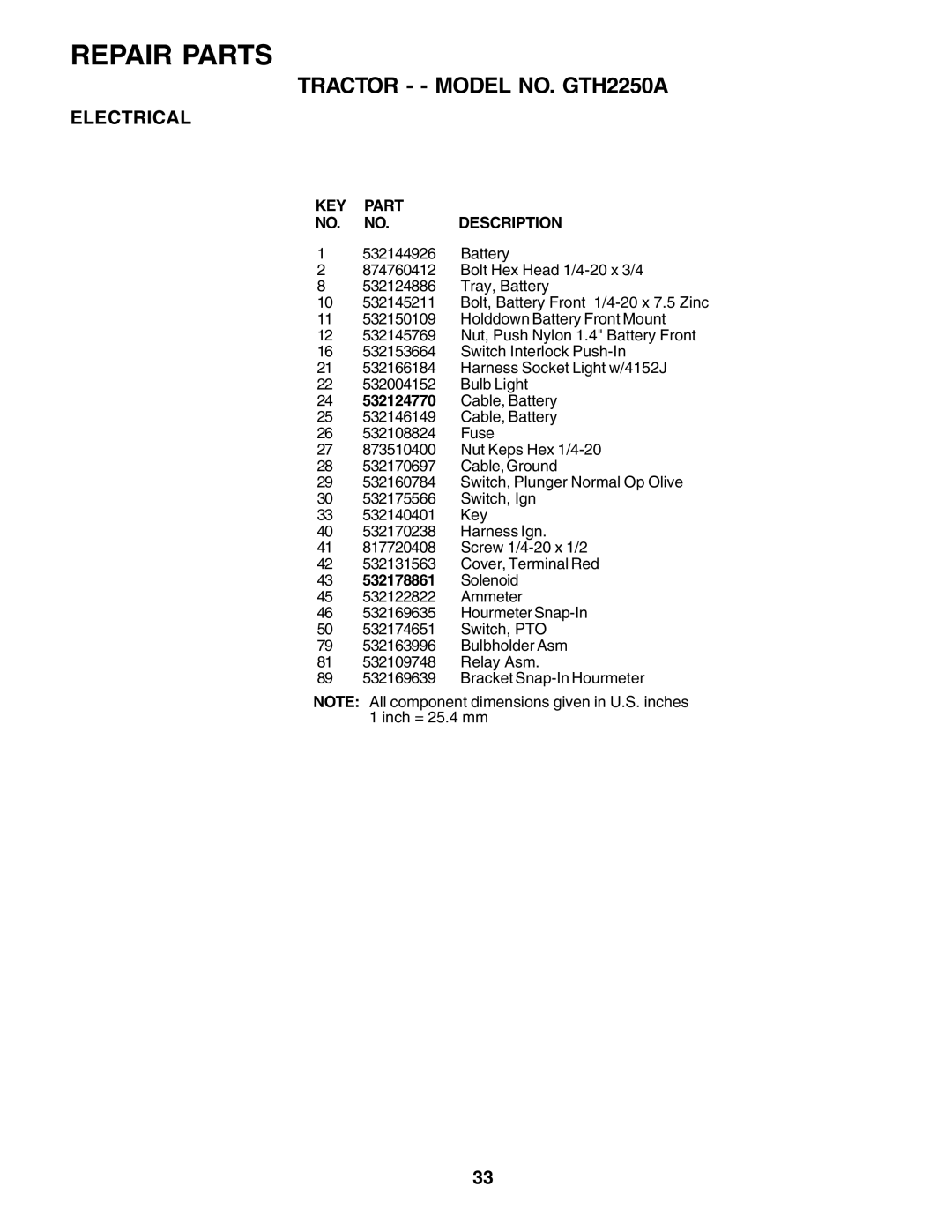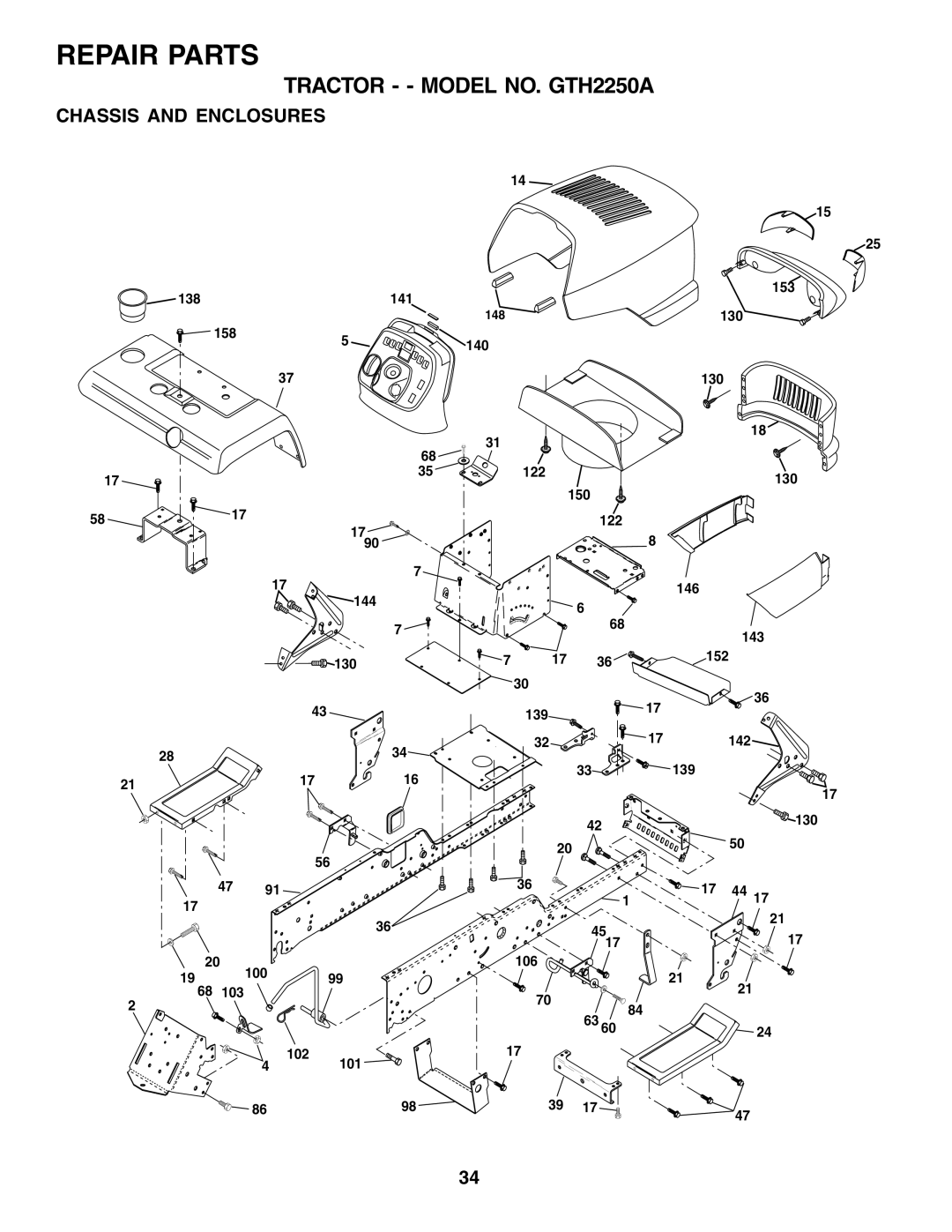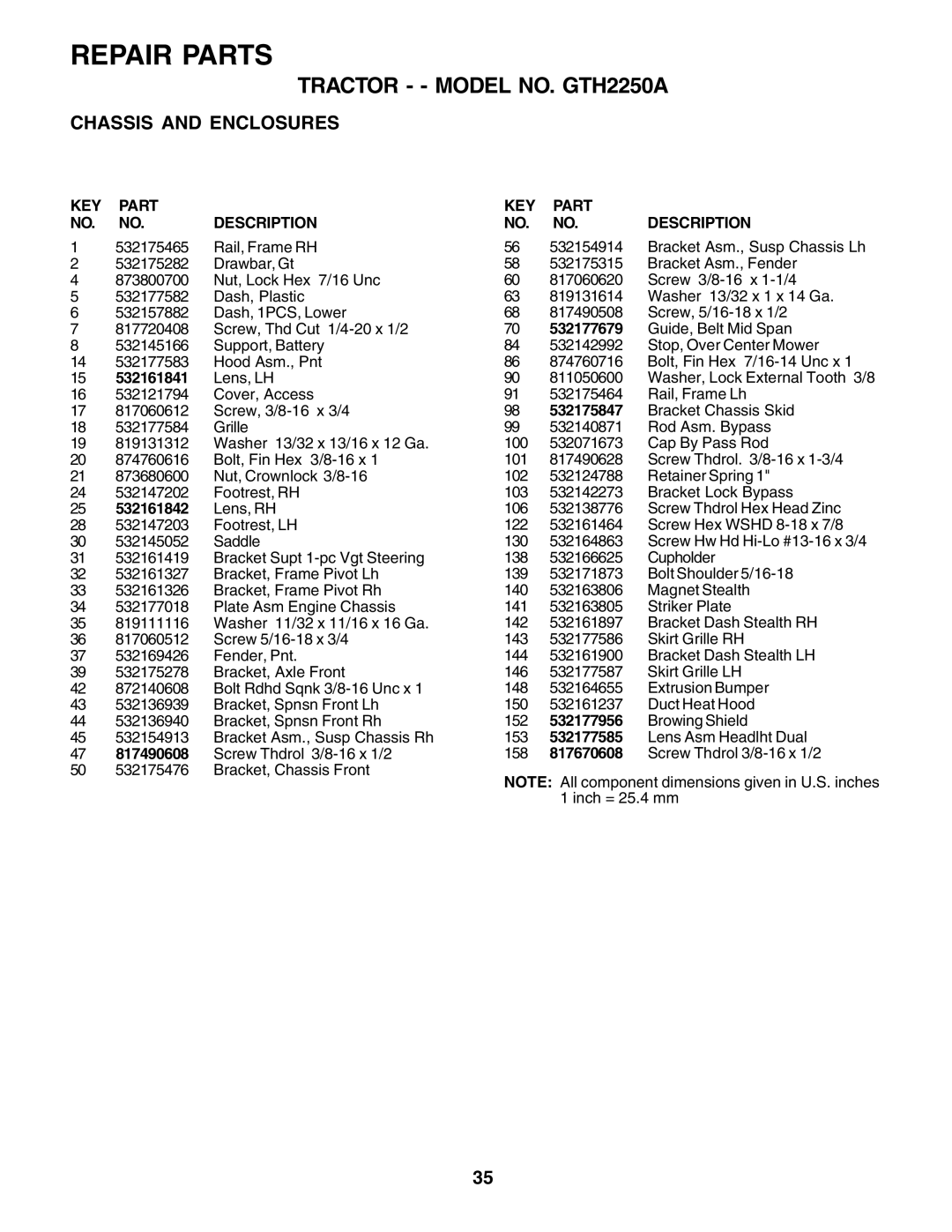
OPERATION
The operation of any tractor can result in foreign objects thrown into the eyes, which can result in severe eye damage. Always wear safety glasses or eye shields while operating your tractor or performing any adjustments or repairs. We recommend a wide vision safety mask over spectacles or standard safety glasses.
HOW TO USE YOUR TRACTOR
TO SET PARKING BRAKE (See Fig. 8)
Your tractor is equipped with an operator presence sensing switch. When engine is running, any attempt by the operator to leave the seat without first setting the parking brake will shut off the engine.
•Depress clutch/brake pedal into full “BRAKE” position and hold.
•Place parking brake lever in “ENGAGED” position and release pressure from clutch/brake pedal. Pedal should remain in “BRAKE” position. Make sure parking brake will hold tractor secure.
with the engine running, hot engine exhaust gases may cause “browning” of grass. To eliminate this possibility, always stop engine when stopping tractor on grass areas.
CAUTION: Always stop tractor com- pletely, as described above, before leav- ing the operator's position; to empty grass catcher, etc.
TO USE THROTTLE CONTROL (See Fig. 8)
Always operate engine at full throttle.
• | Operating engine at less than full throttle reduces the |
battery charging rate. | |
• | Full throttle offers the best mower performance. |
CHOKE
CONTROL
THROTTLE
CONTROL
LEVER
CLUTCH/BRAKE PEDAL ![]()
![]() “BRAKE”
“BRAKE” ![]()
![]()
POSITION
“DRIVE”
POSITION
HEIGHT
ADJUSTMENT
KNOB
ATTACHMENT CLUTCH SWITCH PULL OUT TO “ENGAGE”
PUSH IN TO
“DISENGAGE”
IGNITION
KEY
MOTION
CONTROL
LEVER
PARKING
“DISENGAGED” BRAKE
POSITION“ENGAGED” POSITION
TO USE CHOKE CONTROL (See Fig. 8)
Use choke control whenever you are starting a cold engine. Do not use to start a warm engine.
•To engage choke control, pull knob out. Slowly push knob in to disengage.
TO MOVE FORWARD AND BACKWARD (See Fig. 8)
The direction and speed of movement is controlled by the motion control lever.
•Start tractor with motion control lever in neutral (N) position.
•Release parking brake and clutch/brake pedal.
•Slowly move motion control lever to desired position.
TO ADJUST MOWER CUTTING HEIGHT (See Fig. 8)
FIG. 8
STOPPING (See Fig. 8)
MOWER BLADES -
•To stop mower blades,move attachment clutch switch to “DISENGAGED” position.
GROUND DRIVE -
•To stop ground drive, depress clutch/brake pedal into full “BRAKE” position..
•Move motion control lever to neutral (N) position.
IMPORTANT: THE MOTION CONTROL LEVER DOES NOT RETURN TO NEUTRAL (N) POSITION WHEN THE CLUTCH/BRAKE PEDAL IS DEPRESSED.
ENGINE -
•Move throttle control to slow position.
NOTE: Failure to move throttle control to slow position and allowing engine to idle before stopping may cause engine to “backfire”.
•Turn ignition key to “OFF” position and remove key. Always remove key when leaving tractor to prevent unauthorized use.
•Never use choke to stop engine.
IMPORTANT: LEAVING THE IGNITION SWITCH IN ANY POSITION OTHER THAN "OFF" WILL CAUSE THE BATTERY TO BE DISCHARGED, (DEAD).
NOTE: Under certain conditions when tractor is standing idle 12
The cutting height is controlled by turning the height adjust- ment knob in desired direction.
•Turn knob clockwise (![]() ) to raise cutting height.
) to raise cutting height.
•Turn knob counterclockwise (![]() ) to lower cutting height.
) to lower cutting height.
The cutting height range is approximately
•The average lawn should be cut to approximately
•For best cutting performance, grass over 6 inches in height should be mowed twice. Make the first cut relatively high; the second to desired height.
TO ADJUST GAUGE WHEELS (See Fig. 9)
Gauge wheels are properly adjusted when they are slightly off the ground when mower is at the desired cutting height in operating position. Gauge wheels then keep the deck in proper position to help prevent scalping in most terrain conditions.
